Art and Creativity Quotations
What Do Creatives Say About Identity in Their Work?

In our creative endeavors, we discover the art of blending the different aspects of our identities, creating a beautiful tapestry of self-expression. Whether through brush strokes or poetic verses, artists globally understand the ability of their creations to free and honor individuality.
As we explore the vast landscapes of culture and personal experiences, our creative spirits become catalysts for change, breaking free from the shackles of societal expectations. Through art, we embrace our cultural heritage, challenge stereotypes, and reclaim our identities.
It is in this realm of artistic expression that we discover the true essence of who we are, and in turn, inspire others to embrace their own unique selves. Join us as we delve into the voices and perspectives of creatives, uncovering the profound ways in which they illuminate the richness of our diverse identities.
Key Takeaways
- Artists use their chosen medium to explore their identity and discover hidden depths within themselves.
- Artistic freedom allows artists to break free from societal constraints and express their true selves.
- Through their art, artists find solace, healing, and liberation.
- Art serves as a cathartic process that helps artists understand themselves better.
Artists on the Power of Self-Expression
Artists emphasize the transformative power of self-expression in their work. Through their art, they embark on a journey of self-discovery, unearthing hidden depths within themselves and exploring the intricacies of their identity. Artistic freedom allows them to break free from societal constraints and express their true selves without fear or judgment.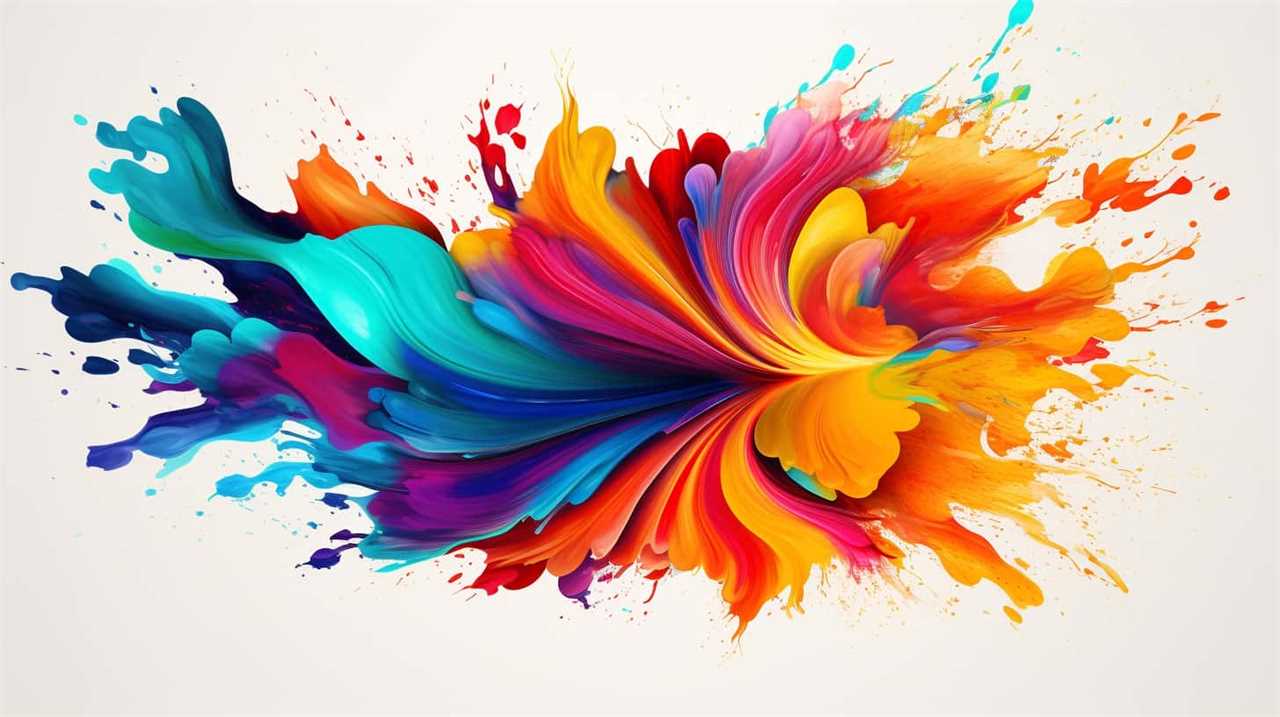
In this quest for self-discovery, artists delve deep into their emotions, thoughts, and experiences. They use their chosen medium to communicate their innermost desires, fears, and passions. Through their art, they find solace, healing, and liberation. It’s a cathartic process that not only helps them understand themselves better but also allows others to connect with their work on a profound level.
Artistic freedom gives artists the power to challenge established norms and conventions. They can push boundaries, question societal expectations, and inspire change. Through their art, they can ignite a sense of rebellion, encouraging others to question their own identities and embrace their individuality.
The transformative power of self-expression goes beyond the canvas or the stage. It has the ability to impact lives and shape communities. Artists have the unique opportunity to create a space of inclusivity and acceptance, where everyone feels seen, heard, and understood.
Embracing Cultural Heritage Through Art
Continuing the exploration of self-expression, we embrace our cultural heritage through art, celebrating the rich tapestry of our identities. Art has long been a powerful tool for cultural preservation, allowing us to express our history, traditions, and values in a way that resonates with others. Through art, we not only honor our ancestors and their contributions, but we also create a platform for dialogue and understanding.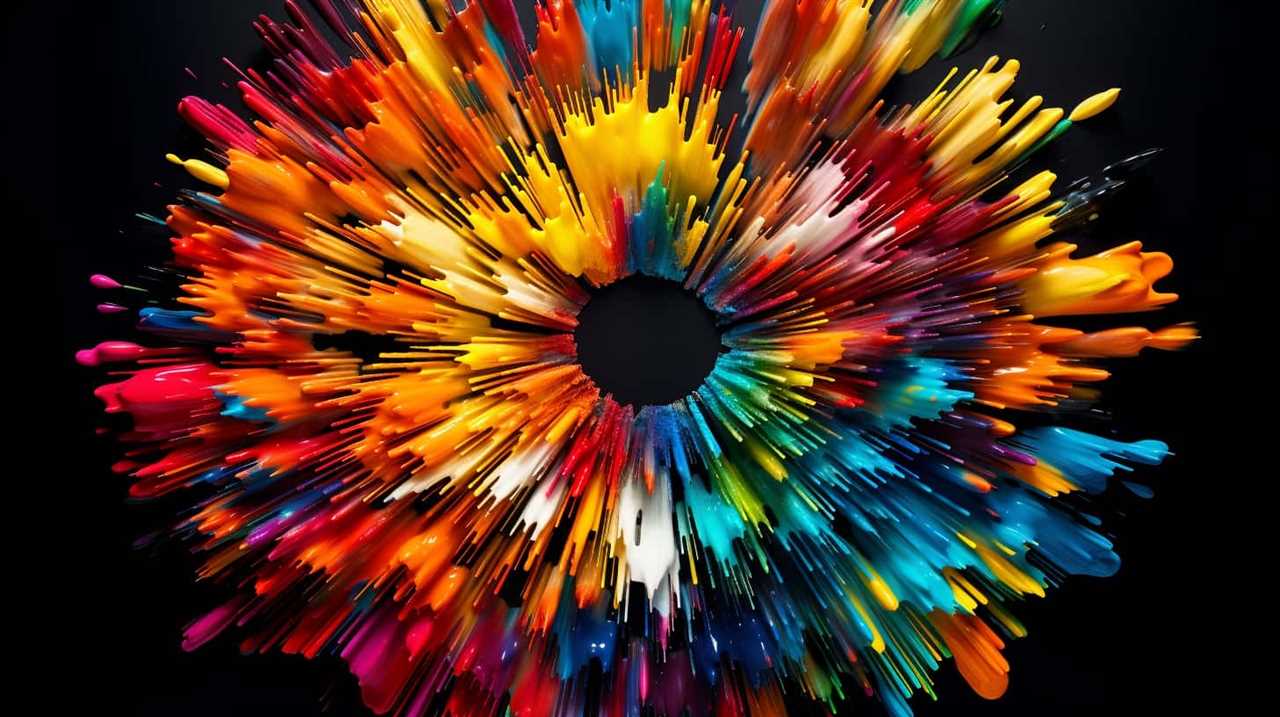
| Cultural Preservation | Art as Activism | Self-Discovery |
|---|---|---|
| Art serves as a bridge between past and present, ensuring that our cultural heritage is not forgotten. Through visual representations, we preserve stories, rituals, and practices that have shaped us. | Art has the power to challenge societal norms and provoke thought. By using our creativity as a form of activism, we can shed light on social injustices and push for change. | Exploring our cultural heritage through art allows us to delve deeper into our own identities. It is a journey of self-discovery, where we uncover hidden aspects of ourselves and gain a sense of belonging. |
Embracing our cultural heritage through art is not only a personal endeavor but also a collective movement towards liberation. It allows us to reclaim our narratives, challenge stereotypes, and break free from oppressive systems. Art empowers us to express ourselves authentically, while also inspiring others to do the same. It is a powerful tool that transcends boundaries and unites us in our shared humanity.
Exploring Personal Identity Through Creativity
Through our creative pursuits, we actively explore and define our personal identities. Artistic exploration allows us to embark on a journey of self-discovery, delving deep into the depths of our being and uncovering hidden aspects of ourselves. It’s through this process that we truly understand who we’re and what makes us unique.
The canvas becomes our mirror, reflecting our innermost thoughts, emotions, and experiences. With each brushstroke, we paint a piece of our soul, revealing fragments of our identity that may have been hidden or suppressed.
Words become our allies, empowering us to express our innermost desires, fears, and dreams. Through writing, we delve into the labyrinth of our minds, unraveling the intricacies of our thoughts and uncovering the essence of who we are.
Movement becomes our language, allowing us to communicate without words. Through dance, we explore the depths of our physicality, expressing our emotions and connecting with our truest selves.
In this journey of artistic self-discovery, we liberate ourselves from societal expectations and norms. We embrace our unique perspectives, celebrating the diversity that exists within us. Through creativity, we not only define our personal identities but also contribute to the collective tapestry of human existence.
Breaking Stereotypes Through Artistic Expression
Through the medium of art, we challenge and dismantle societal stereotypes. We use our creativity to break free from the limitations imposed by society and redefine what it means to be a man or a woman. We refuse to accept the narrow definitions of gender roles and instead strive to create a world where everyone is free to express themselves authentically, regardless of their gender identity.
In our art, we aim to break gender stereotypes by depicting individuals who defy traditional expectations. We showcase strong, independent women who aren’t confined to the roles of wife or mother, but are leaders, warriors, and visionaries. We celebrate men who embrace their vulnerability and reject toxic masculinity, showing that strength comes in many forms.
Furthermore, we challenge beauty standards by creating art that celebrates diverse bodies, skin tones, and features. We reject the idea that there’s one ideal standard of beauty and instead highlight the uniqueness and individuality of each person. Our art serves as a powerful tool to redefine beauty and promote self-acceptance and self-love.
Art has the power to reflect the diverse identities that exist within our society. Through our work, we strive to create a space where people from all walks of life can see themselves represented and celebrated. We believe that by breaking stereotypes and redefining beauty standards, we can contribute to a more inclusive and accepting world.
Art as a Reflection of Diverse Identities
As creatives, we believe that art has the power to reflect and embrace the diverse identities present in our society, allowing for a more inclusive and accepting world. Through artistic exploration, we’re able to delve into the complexities of identity and express our experiences, perspectives, and struggles. Art becomes the medium through which we can communicate and challenge societal norms, stereotypes, and expectations.
Colors on a canvas: Imagine a vibrant painting, each brushstroke representing the diverse hues of humanity. The colors blend and intertwine, showcasing the beauty and uniqueness of every individual.

Stories of the unseen: Art gives voice to the marginalized, the underrepresented, and the invisible. It allows them to share their stories, shining a light on their experiences and bringing them into the collective consciousness.
Breaking boundaries: Art has the power to break down barriers and challenge the limitations placed on identity. It transcends language, culture, and societal constraints, fostering a sense of unity and understanding.
Through our creative expressions, we hope to inspire others to embrace their own identities and celebrate the diversity that exists within our world. By recognizing the power of art to reflect and validate diverse identities, we can foster a more inclusive and liberated society.
With this understanding, let’s now explore how contemporary art celebrates multiculturalism.
Celebrating Multiculturalism in Contemporary Art
As artists, we’re constantly influenced by the rich tapestry of cultures that surround us.
The celebration of multiculturalism in contemporary art is a powerful way to showcase the diverse perspectives and experiences that shape our world.
Cultural Influences in Art
In our exploration of identity in our creative work, we embrace the rich tapestry of cultural influences that shape contemporary art. Cultural assimilation in art allows us to integrate elements from different cultures into our work, creating a harmonious blend of diverse traditions.
This fusion of cultural elements adds depth and complexity to our art, capturing the essence of our multicultural society. Additionally, cultural appropriation in art opens up a dialogue about power dynamics and the ethics of borrowing from other cultures. It challenges us to critically examine our intentions and the impact of our choices.
By acknowledging and respecting the origins of our artistic inspiration, we can create art that celebrates multiculturalism and promotes understanding.
This emphasis on cultural influences transitions us into the subsequent section about representation and diversity, where we explore how art can be a powerful tool for inclusivity and social change.
Representation and Diversity
To celebrate multiculturalism in contemporary art, we embrace the power of representation and diversity.
Inclusion in art isn’t just about checking boxes or tokenism; it’s about creating a space where all voices are heard and valued.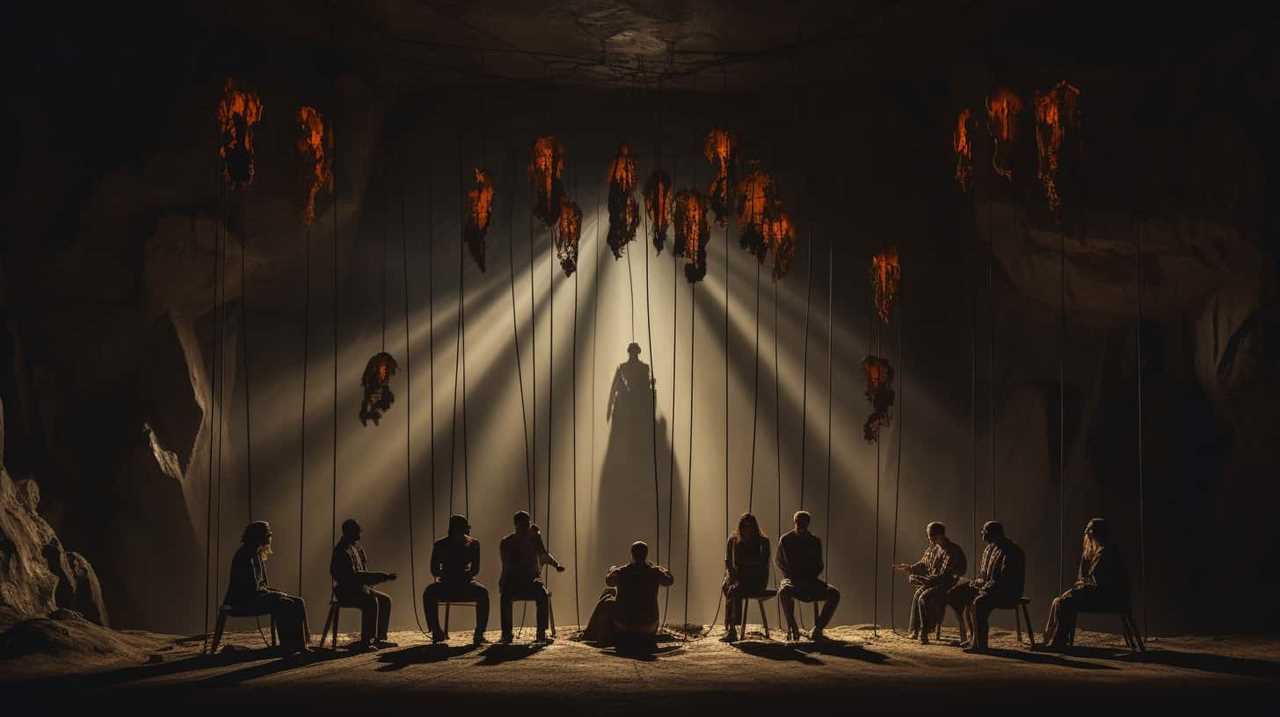
We believe that representation in media plays a crucial role in challenging stereotypes and breaking down barriers. It allows for a more nuanced and accurate portrayal of different cultures and identities.
By including diverse perspectives in our art, we can foster understanding, empathy, and connection.
We strive to create a world where everyone feels seen, heard, and celebrated. Through our work, we aim to dismantle the oppressive systems that have historically excluded and marginalized certain groups.
Together, we can create a more inclusive and equitable art world.
Impact on Artistic Expression
By embracing multiculturalism in contemporary art, we explore how it impacts our artistic expression and fosters a more inclusive and diverse creative landscape. Artistic interpretation becomes a powerful tool for self-discovery, allowing us to delve into our own identities and understand the experiences of others. Here’s how embracing multiculturalism enhances artistic expression:
- Broadening Perspectives: Multiculturalism challenges us to see the world through different lenses, expanding our understanding of diverse cultures, traditions, and perspectives. This exposure fuels our creative process, pushing us to explore new themes and narratives.
- Blurring Boundaries: Multiculturalism breaks down barriers, dissolving the limitations of traditional artistic forms. It encourages us to experiment with various mediums, techniques, and styles, enabling us to create art that defies categorization and embraces diversity.
- Celebrating Intersectionality: Multiculturalism emphasizes the intersection of identities, highlighting the complexities of race, ethnicity, gender, and sexuality. This celebration of intersectionality empowers us to explore the multifaceted nature of human existence, fostering a more inclusive and nuanced artistic expression.
In embracing multiculturalism, we embrace the richness of our diverse world, unlocking new dimensions of artistic expression and embarking on a journey of self-discovery.
Identity Crisis: Artists’ Search for Self
Through our exploration of the creative process, we’ve come to understand the prominent role that an identity crisis plays in an artist’s search for self. Artists often find themselves grappling with their own sense of identity, questioning who they truly are and where they fit in the world. This struggle isn’t only a result of external pressures and societal expectations but also a deep desire to find authenticity in their work.
In the quest for self-discovery, artists often find themselves confronting a multitude of conflicting emotions and thoughts. They may question their purpose, their values, and their beliefs, as they strive to create art that reflects their truest selves. This process can be deeply introspective, as artists delve into the depths of their own psyche, uncovering hidden layers of their identity.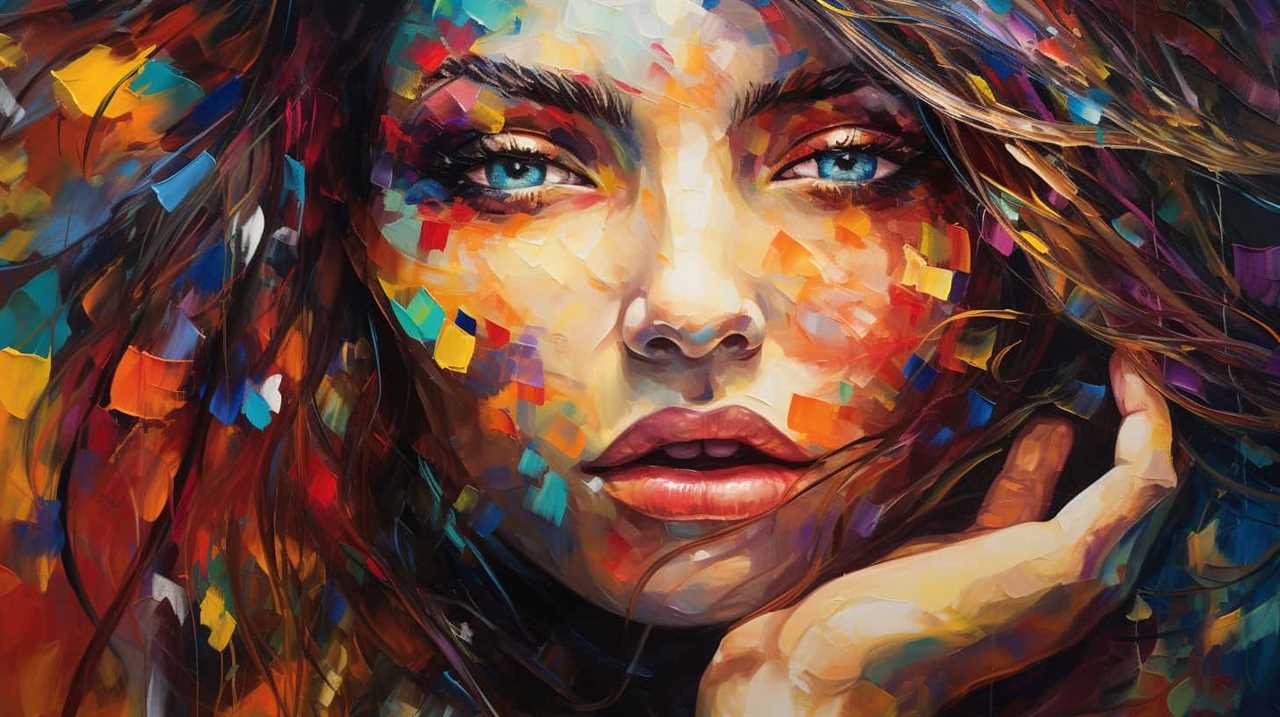
The search for self in art isn’t a linear journey, but rather a continuous exploration. Artists experiment with various styles, mediums, and techniques, constantly pushing the boundaries of their creativity. They may find themselves drawn to different themes or subjects, as they seek to express different aspects of their identity through their work.
Ultimately, the identity crisis that artists experience is a catalyst for growth and self-discovery. It’s through this struggle that they’re able to unearth their truest selves and create art that’s authentic and deeply personal. In embracing their identity crisis, artists find liberation and a sense of purpose in their work.
The Role of Art in Shaping Individuality
Artists shape their individuality through the transformative power of art. Through artistic expression, we’re able to delve deep into the depths of our being, exploring and discovering aspects of ourselves that may have been previously hidden. Art has the ability to shape our self-awareness in profound ways, allowing us to embrace our true essence and express it authentically.
Here are three ways in which art can help shape our individuality:
- Self-reflection: Art provides a safe space for introspection, allowing us to reflect on our emotions, experiences, and beliefs. Through this process, we gain a deeper understanding of ourselves and our place in the world, fostering self-awareness and personal growth.
- Emotional release: Art can serve as a powerful outlet for our emotions, enabling us to express and process feelings that may be difficult to articulate verbally. This cathartic release allows us to heal, let go, and move forward with a greater sense of clarity and inner peace.
- Art therapy: Art therapy is a form of psychotherapy that utilizes artistic expression as a means of promoting self-discovery and healing. Through guided artistic activities, individuals can explore their thoughts, feelings, and experiences, leading to personal insights and transformation.
As artists, we recognize the immense potential of art to shape our individuality and foster self-awareness. It’s through this process that we’re able to truly embrace and celebrate our unique identities.
With this understanding, we now delve into the next section, exploring the artistic interpretations of gender and sexuality.
Artistic Interpretations of Gender and Sexuality
As creatives, we’re constantly exploring and challenging societal norms through our artistic interpretations of gender and sexuality. Our work reflects the fluidity in gender expression, capturing the beauty and complexity of individuals who exist beyond the binary.
Through our art, we strive to amplify queer narratives, creating spaces where marginalized voices can be heard and celebrated.

Fluidity in Gender Expression
Exploring the fluidity of gender expression allows us to delve into diverse artistic interpretations of gender and sexuality. In today’s society, individuals are challenging traditional notions of gender and embracing a more fluid approach to self-expression. This is reflected not only in fashion choices but also in the representation of gender in media.
Here are three powerful images that capture the essence of fluidity in gender expression:
- A runway show where models, regardless of their assigned gender at birth, confidently strut in garments that blur the lines between masculine and feminine aesthetics.
- A vibrant mural depicting individuals of various genders and sexual orientations, celebrating their unique identities and rejecting societal norms.
- A film that tells the story of a non-binary character navigating their journey of self-discovery, challenging the binary constructs that limit our understanding of gender and sexuality.
These artistic interpretations serve as a reminder that gender isn’t fixed, but rather a spectrum of possibilities. As we explore the fluidity of gender expression, we open the door to discussing the importance of queer narratives in art and the ways in which they contribute to a more inclusive and liberated society.
Queer Narratives in Art
Continuing the exploration of fluidity in gender expression, we’re drawn to the powerful and inclusive narratives that queer artists bring to their work.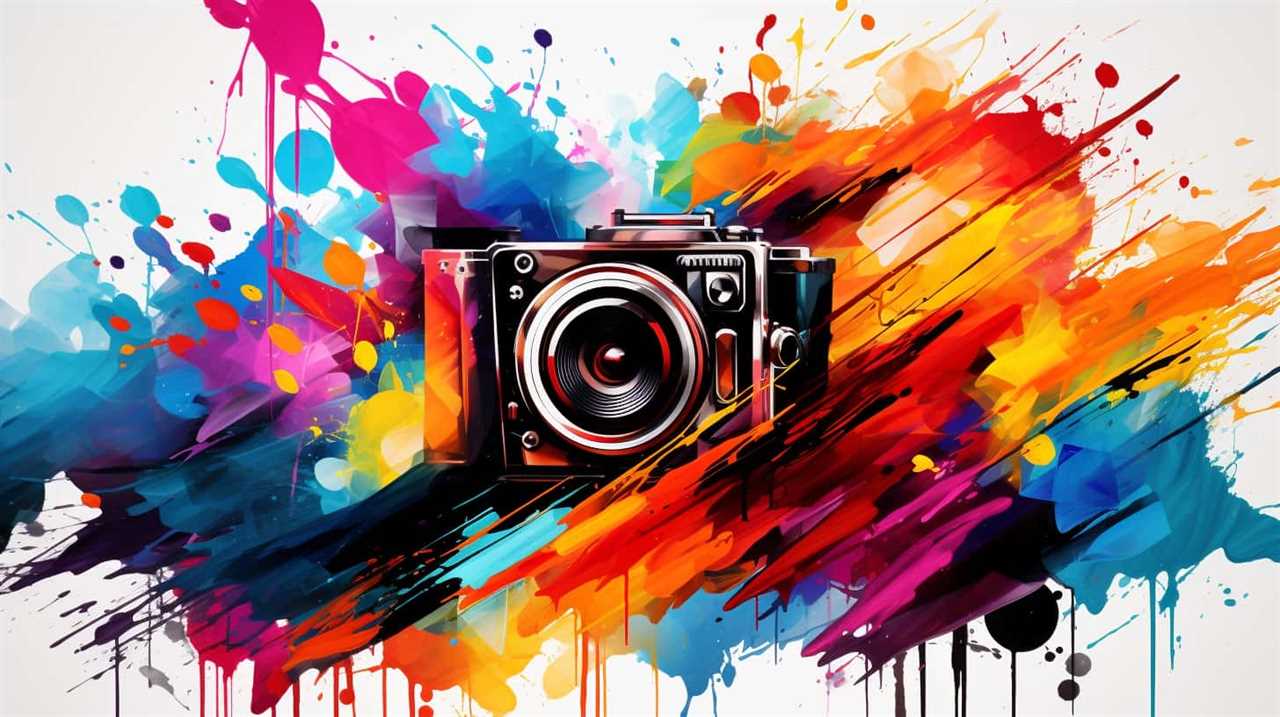
Queer representation and LGBTQ+ narratives in art have transformed the way we perceive and understand gender and sexuality. Through their artwork, queer artists challenge societal norms, dismantle stereotypes, and create spaces for marginalized voices to be heard.
They use art as a medium to express their personal experiences, struggles, and triumphs, bringing visibility and validation to the LGBTQ+ community. These narratives not only provide a mirror for queer individuals to see themselves reflected in art, but also educate and enlighten those outside the community, fostering empathy and understanding.
Queer art has the potential to inspire change, fostering a world where all identities are celebrated and embraced.
As we delve into the next section about challenging societal norms, we’ll further explore how art can disrupt and redefine the status quo.
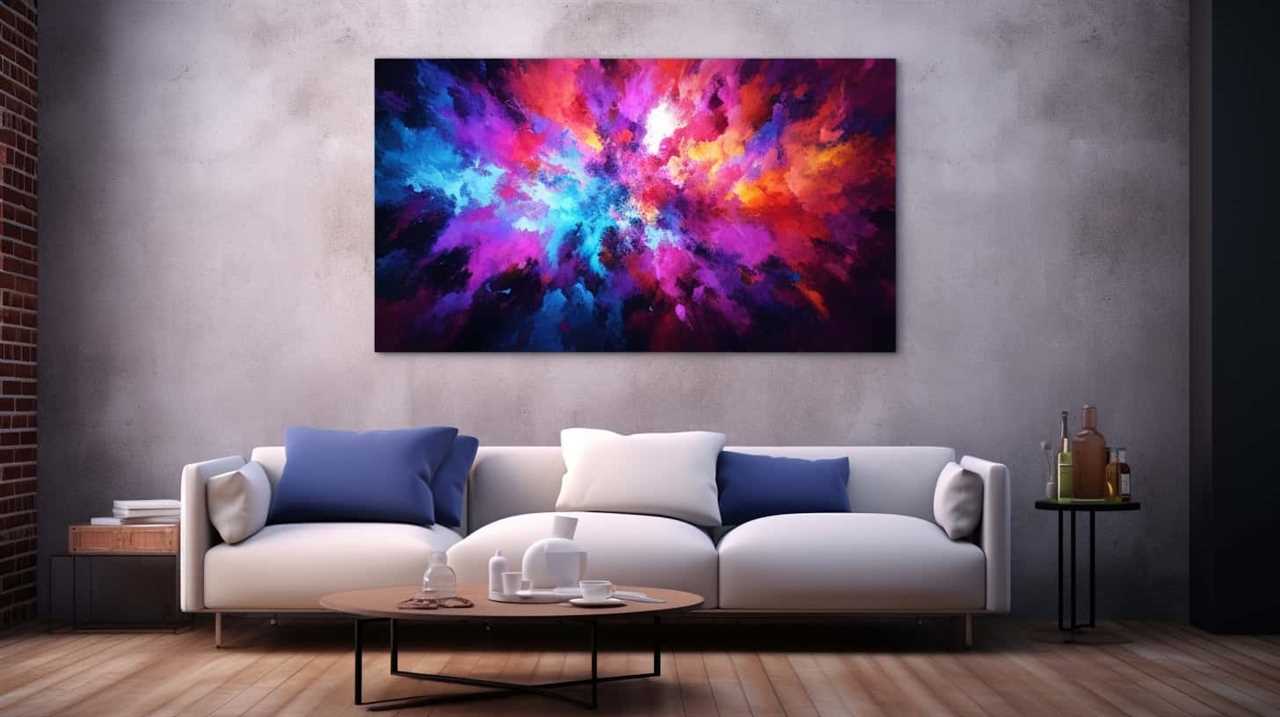
Challenging Societal Norms
Through our artwork, we challenge societal norms by reinterpreting and redefining gender and sexuality. We strive to deconstruct stereotypes and break free from the confines of traditional gender roles. Our art is a powerful tool for expressing the fluidity and diversity of human identity.
We create vibrant and bold portraits that challenge the narrow beauty standards imposed by society. Our subjects defy conventional notions of beauty, celebrating uniqueness and individuality.
We use mixed media to explore the complexity of gender and sexuality, blurring the lines between male and female, gay and straight. Our art invites viewers to question their own preconceived notions and embrace the spectrum of human experience.
We capture intimate moments of love and desire, showcasing the beauty of diverse relationships and identities. Our art aims to normalize and empower all expressions of love, regardless of gender or sexual orientation.
Challenging Societal Norms Through Artistic Representation
Challenging societal norms is at the core of our creative work, as we strive to provoke thought and spark conversations through our artistic representations. We believe that art has the power to challenge and redefine the way society views and understands gender roles and beauty standards.
Through our work, we aim to explore the complexities of gender and break free from the rigid expectations imposed by society. We create art that challenges the traditional notions of masculinity and femininity, encouraging viewers to question and reconsider the roles that have been assigned to them.
In our artistic representations, we seek to redefine beauty standards by celebrating diversity and embracing all forms of beauty. We reject the narrow and unrealistic ideals that society often imposes, and instead, we showcase the beauty in every individual, regardless of their size, shape, or appearance. Our aim is to empower individuals to embrace their authentic selves and to challenge the limited definition of beauty that has been perpetuated for far too long.
Artists’ Reflections on Race and Ethnicity
As we explore the theme of artists’ reflections on race and ethnicity in our work, we examine the ways in which identity is intricately intertwined with these aspects of human experience. Artists’ experiences of navigating identity are complex and multifaceted, encompassing a range of emotions, challenges, and triumphs.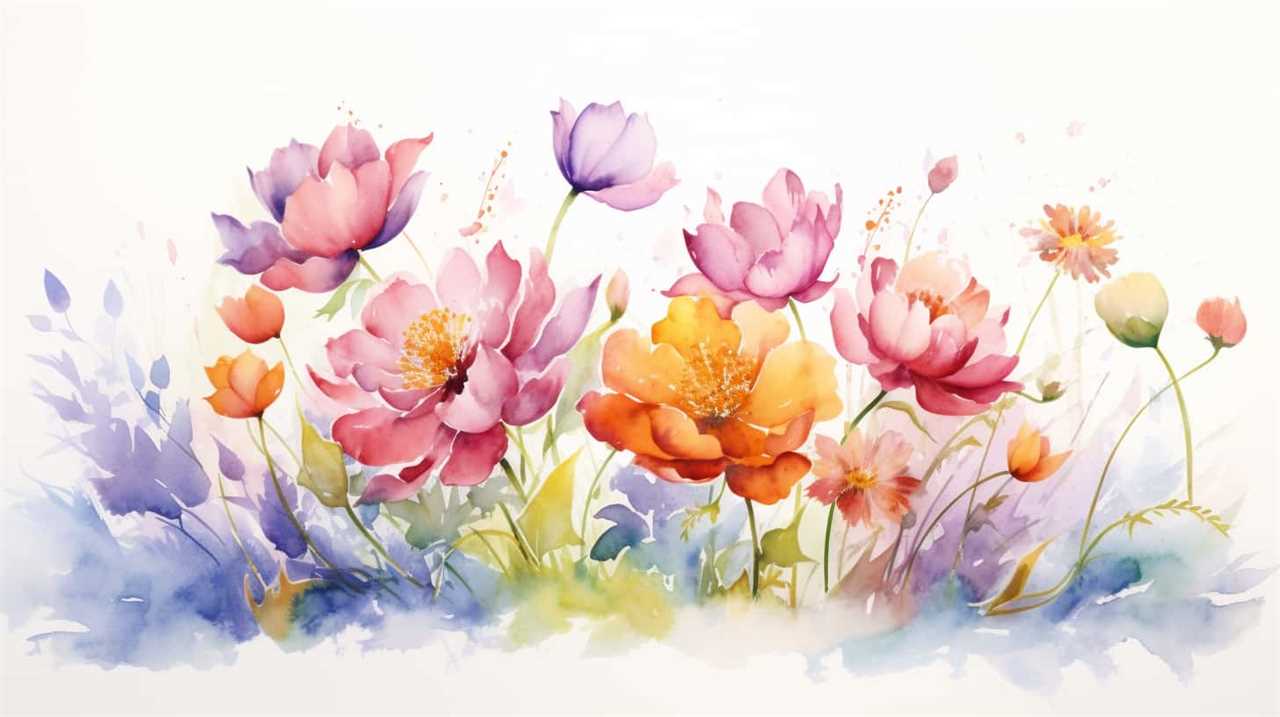
Here are three ways in which artists engage with race and ethnicity in their work:
- Representation: Artists often strive to represent diverse racial and ethnic identities in their artwork, challenging the dominant narratives and stereotypes that perpetuate inequality. Through their creations, they aim to showcase the beauty, strength, and resilience of underrepresented communities, providing a platform for marginalized voices to be heard.
- Exploration: Artists use their work as a means of exploring their own racial and ethnic identities, delving deep into their personal history, heritage, and cultural traditions. By reflecting on their roots, they gain a deeper understanding of themselves and their place in the world, forging a stronger connection to their identity.
- Social Commentary: Many artists use their platform to address issues of race and ethnicity, shedding light on the systemic injustices and inequalities that persist in society. Through their art, they challenge the status quo, provoke thought, and spark conversations that lead to positive change.
Art as a Tool for Reclaiming Cultural Identity
To understand the power of art in reclaiming cultural identity, we must recognize how artists employ their creative expressions. Art becomes a tool, a weapon even, in the fight to reclaim traditions and resist the erasure of our cultures. For marginalized communities, art is a means of asserting our existence, our histories, and our values. It’s a way of saying, ‘We are here, and we won’t be silenced.’
Through art, we reclaim the traditions that have been stolen from us, the stories that have been silenced, and the knowledge that has been erased. We use our creativity to reconnect with our roots, to honor our ancestors, and to celebrate the richness of our cultural heritage. In doing so, we resist the dominant narratives that seek to marginalize and homogenize us.
Art becomes a form of resistance, a way of challenging the oppressive systems that seek to erase our identities. It allows us to express our anger, our pain, and our resilience. It gives us a platform to speak our truths, to share our stories, and to demand justice.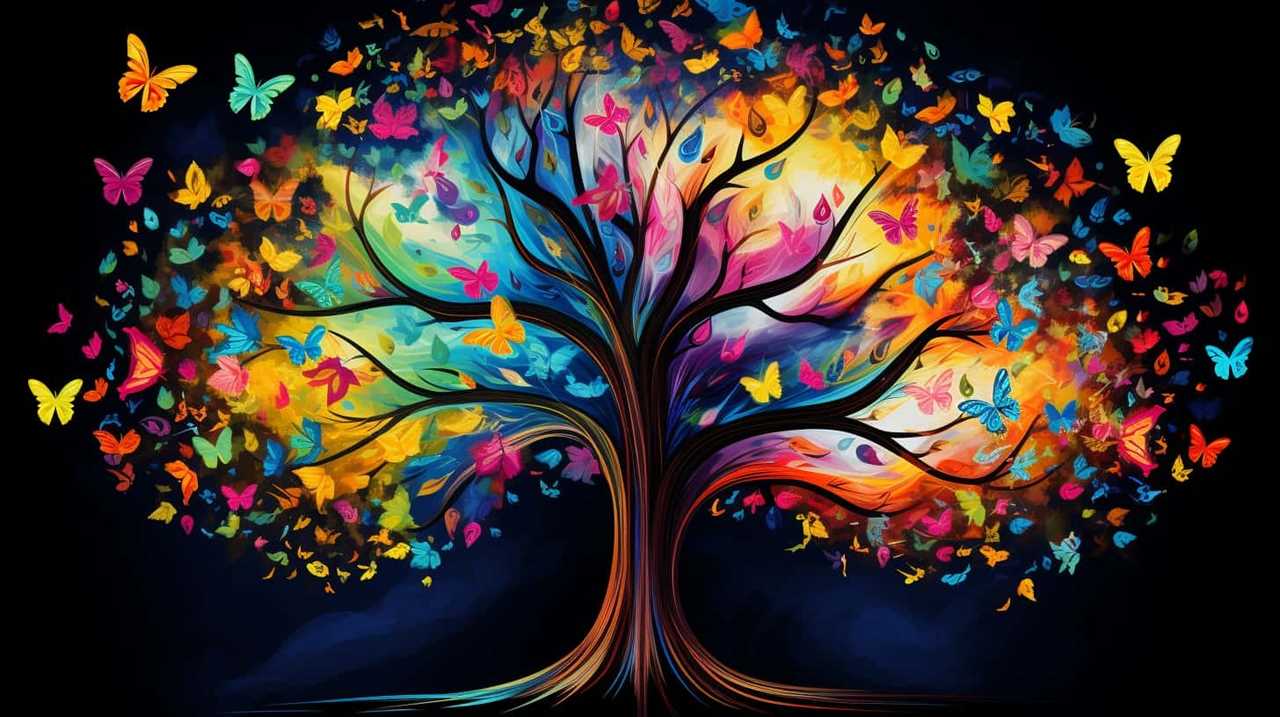
In reclaiming our cultural identity through art, we reclaim our power. We refuse to be defined by others, and instead, we define ourselves. We create our own narratives, our own representations, and our own symbols of liberation. Art becomes a tool for liberation, a way of asserting our humanity, and a means of envisioning a future where our cultures aren’t only acknowledged but celebrated.
Intersectionality in Art: Artists’ Perspectives
As artists, we understand the power of multiple identities in art. We strive to represent diverse perspectives, shedding light on the intersections of race, gender, sexuality, and more.
Through our work, we challenge traditional narratives and create space for marginalized voices to be heard. Intersectionality in art allows us to forge connections and foster empathy, ultimately building a more inclusive and understanding society.
Multiple Identities in Art
When exploring the concept of multiple identities in art, artists provide valuable perspectives on intersectionality within their work. Through their artistic interpretation, they shed light on the complexities of identity and challenge the notion of a single, fixed identity.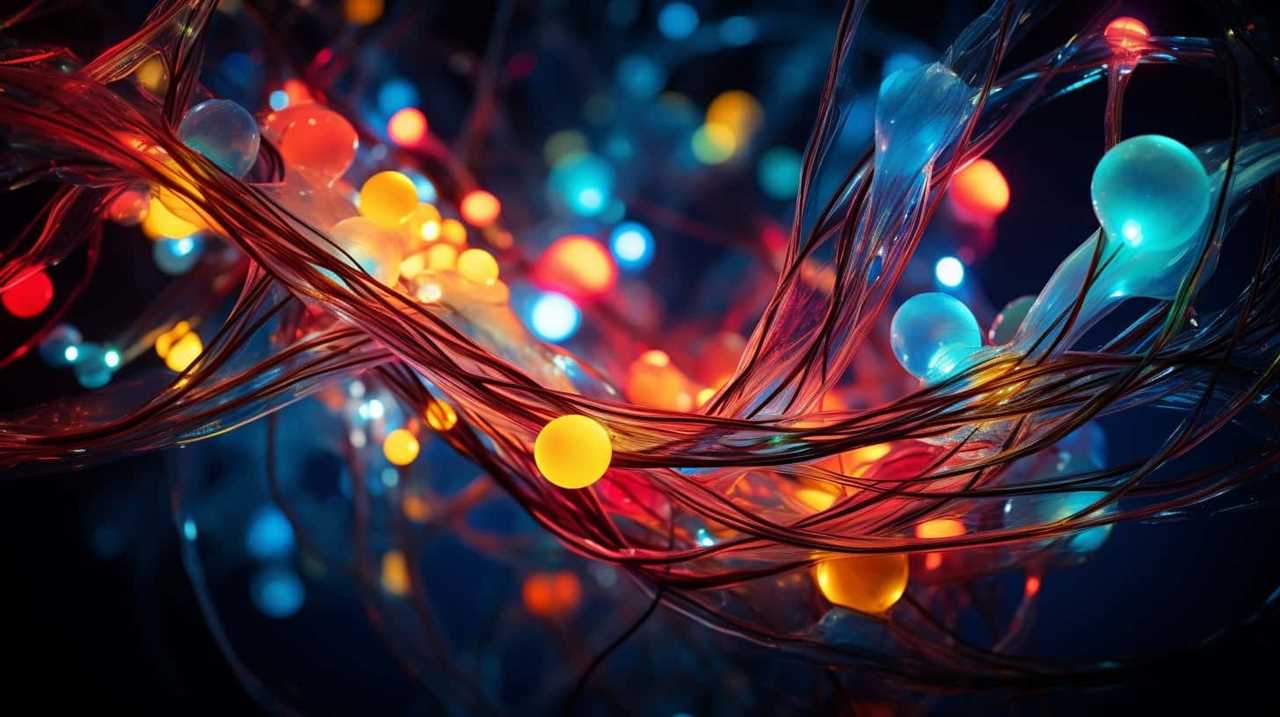
Here are three ways in which artists express the idea of multiple identities in their art:
- Layered Portraits: Artists use a combination of different artistic techniques, such as collage or mixed media, to create portraits that reflect the multifaceted nature of identity. These layered portraits capture the various cultural influences and personal experiences that shape an individual’s identity.
- Hybrid Imagery: Artists merge different cultural symbols and motifs to create new and unique visual representations. By blending elements from different cultural backgrounds, they challenge the notion of cultural assimilation and celebrate the richness that comes from embracing multiple identities.
- Narrative Exploration: Artists use storytelling as a means to explore the complexities of identity. Through their art, they delve into personal narratives and shared experiences, highlighting the intersections between different aspects of identity and the ways in which they shape our understanding of ourselves and others.
Representing Diverse Perspectives
Our exploration of representing diverse perspectives in art reveals the myriad ways artists embrace intersectionality and express their own experiences and those of others.
In a world where representation in mainstream media is often lacking, artists have taken it upon themselves to explore intersectionality and bring marginalized voices to the forefront. They understand that identities are complex and interconnected, and they use their art to challenge stereotypes and break down barriers.
Through their creative work, they aim to dismantle the homogeneity of mainstream narratives and highlight the rich diversity of human experiences. Whether it’s through painting, sculpture, music, or film, these artists strive to create spaces where everyone feels seen, heard, and validated.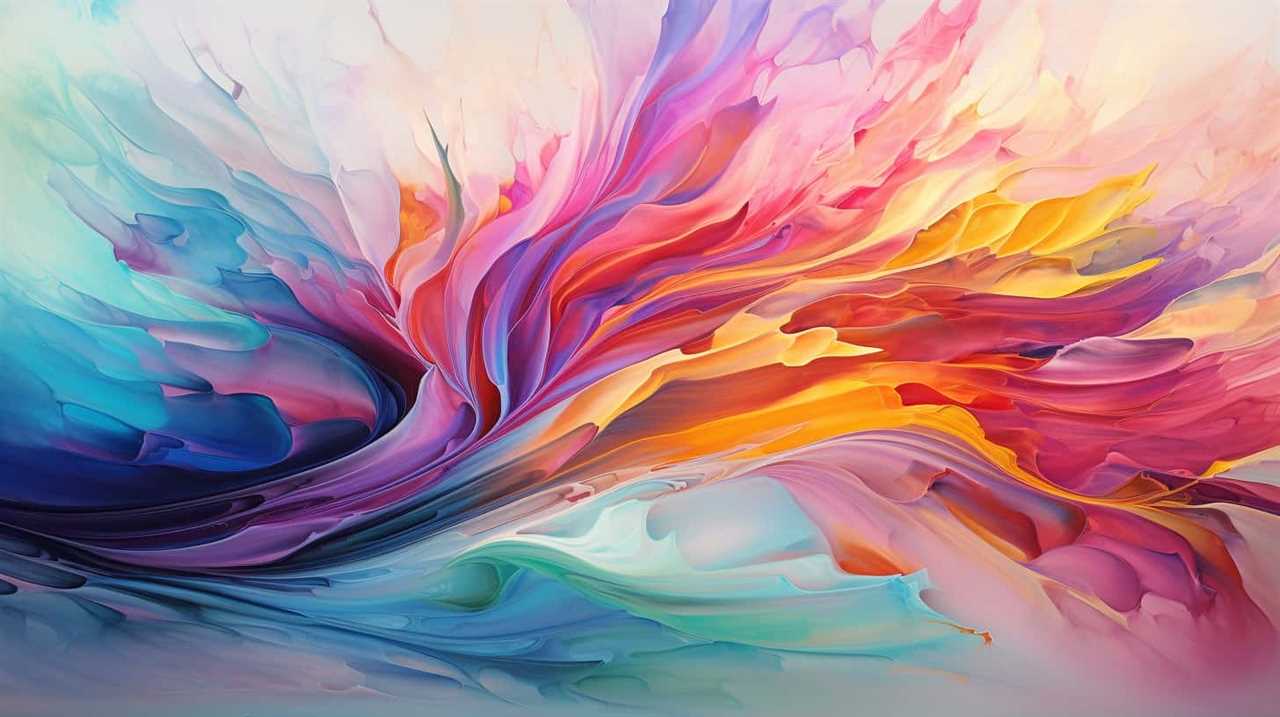
They believe in the power of art to ignite conversations, challenge societal norms, and ultimately, contribute to a more inclusive and liberated world.
The Universal Language of Art in Bridging Cultural Gaps
Art has the ability to bridge cultural gaps, serving as a universal language that transcends boundaries and connects people from diverse backgrounds. It’s through artistic expression that we can find common ground and understand one another on a deeper level.
Here are three ways in which art bridges cultural gaps:
- Visual storytelling: Art has the power to convey stories and experiences in a visual format that can be understood by people from different cultures. Whether it’s a painting, sculpture, or photograph, the emotions and messages conveyed through art can resonate with individuals regardless of their cultural background.
- Cultural exchange: Art exhibitions, festivals, and performances provide platforms for artists to showcase their work and for audiences to experience different cultural perspectives. These events create opportunities for dialogue and understanding, allowing people to appreciate and learn from diverse artistic traditions.
- Challenging stereotypes: Artistic interpretation of history can challenge dominant narratives and shed light on perspectives that have been marginalized or ignored. Through art, we can explore alternative narratives and challenge stereotypes, fostering conversations about identity, culture, and history.
Art is a powerful tool that can break down barriers, foster understanding, and bring people together. By embracing art as a universal language, we can celebrate our differences and find connections that transcend cultural boundaries.
Frequently Asked Questions
How Does Art Contribute to the Exploration of Personal Identity?
Exploring self expression through art allows us to uncover hidden narratives within our personal identities. It liberates us from societal expectations and gives us the opportunity to authentically express ourselves, revealing the intricate layers of who we truly are.
What Challenges Do Artists Face When Breaking Stereotypes Through Their Artistic Expression?
Breaking stereotypes through artistic expression presents challenges that require us to confront societal norms head-on. We face the uphill battle of reimagining identities, shattering expectations, and liberating ourselves from the confinements of preconceived notions.
How Does Art Reflect and Celebrate Diverse Identities?
Art as empowerment is crucial in reflecting and celebrating diverse identities. Through representation and inclusivity, artists challenge societal norms, break stereotypes, and give voice to marginalized communities. Their work becomes a catalyst for liberation and social change.
In What Ways Do Artists Use Their Work to Challenge Societal Norms?
In our work, we push against the limits of societal norms, challenging established boundaries. Through art, we strive to promote inclusivity and create spaces where all identities are celebrated and valued.
How Does Art Serve as a Tool for Reclaiming Cultural Identity?
Art allows us to reimagine traditions and reclaim our cultural identity. Through our creative expressions, we challenge societal norms and strive for representation in art that liberates and empowers marginalized communities.
How Does Cultural Identity Influence Creativity in Art and Expression?
Cultural identity plays a vital role in the creativity of multicultural creatives and cultural expression. Artists draw on their unique cultural backgrounds to infuse their work with diversity and rich narratives. The fusion of different cultural influences often results in groundbreaking art that captivates audiences worldwide.
Conclusion
In conclusion, the power of self-expression through art allows creatives to explore and embrace their cultural heritage, break stereotypes, and reflect on their diverse identities.
One interesting statistic to note is that according to a recent survey, 82% of artists believe that art has the ability to bridge cultural gaps and serve as a universal language.
Through their work, artists are able to reclaim and celebrate their cultural identity, while also fostering understanding and connection among different communities.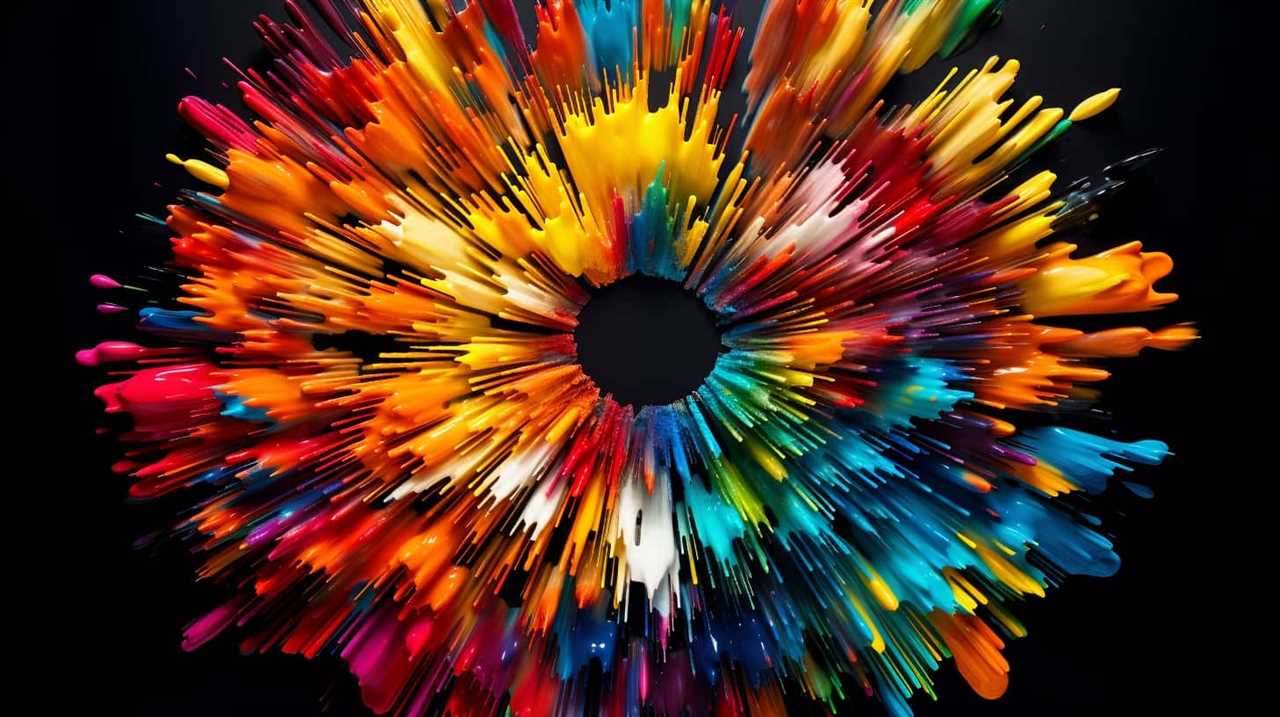
Lauren’s talent in writing is matched by her passion for storytelling. Her love for books and deep understanding of culture and entertainment add a distinct flavor to her work. As our media and press contact, Lauren skillfully bridges the gap between afterQuotes and the broader media landscape, bringing our message to a wider audience.
Art and Creativity Quotations
7 Best Artist Quotes Championing Gender Equality
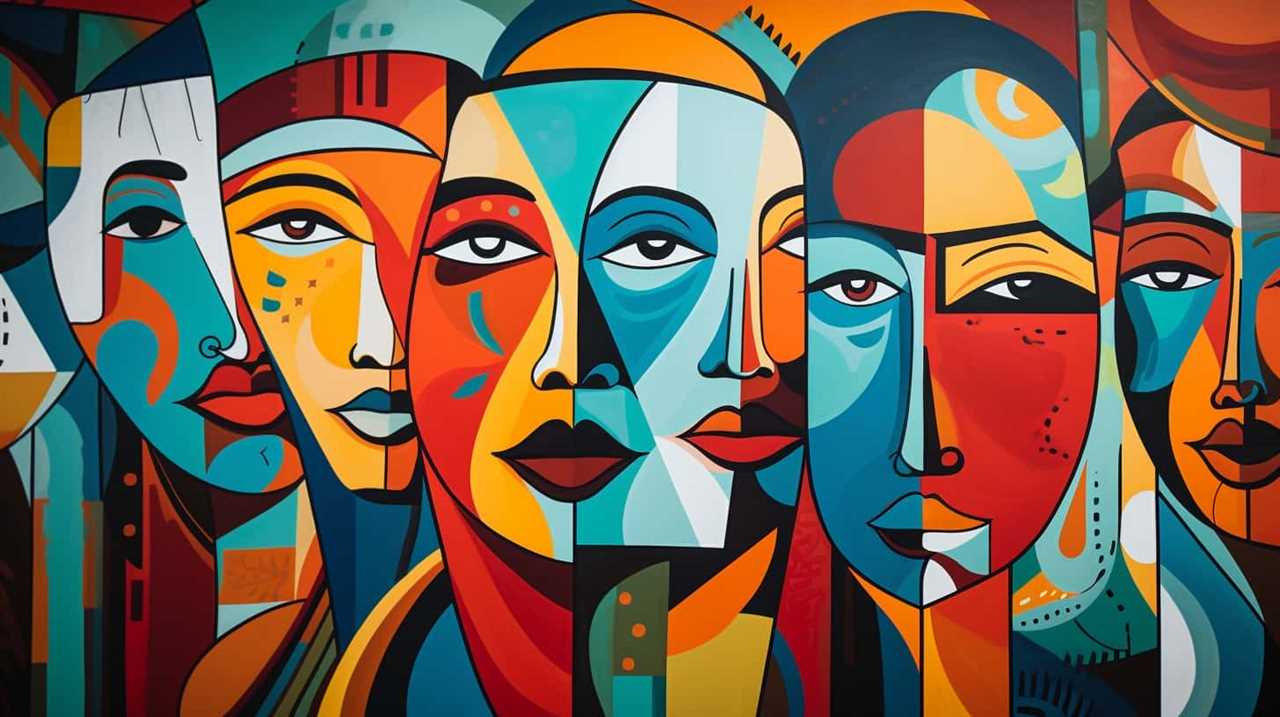
In a world where inequality persists, we highlight the powerful voices of artists advocating for gender equality. These innovative creators inspire us with their words and artistic expressions, motivating us to challenge societal norms and overcome oppression.
Yoko Ono, Tracey Emin, Judy Chicago, Guerrilla Girls, Mickalene Thomas, Jenny Holzer, and Shirin Neshat are among the artists who fearlessly wield their art as a weapon of change. With their poignant quotes, they pierce through the walls of societal constraints and inspire us to strive for a future where equality reigns supreme.
Together, let us delve into their empowering messages and join the movement towards liberation and true equality.
Key Takeaways
- Yoko Ono and Tracey Emin actively advocate for gender equality and challenge societal norms through their art.
- Tracey Emin and Judy Chicago have had a profound impact on feminism and the art world, sparking conversations about gender equality, women’s rights, and celebrating women’s achievements.
- Art serves as a powerful tool for breaking gender stereotypes, promoting inclusivity, and creating a more equal and liberated society.
- Artists like Guerrilla Girls, Mickalene Thomas, Jenny Holzer, and Shirin Neshat use their art to expose discriminatory practices, confront biases, and inspire action for gender equality.
Yoko Ono’s Powerful Words
Yoko Ono’s powerful words resonate with us as she speaks out and champions gender equality. Her activism and influence have left an indelible mark on the fight for gender equality. Ono has been a vocal advocate for women’s rights, using her platform as an artist to raise awareness and inspire change. Through her art, she challenges societal norms and encourages us to question the status quo.
One of Ono’s most iconic statements is ‘Woman is the N***** of the World,’ a phrase that confronts the intersectionality of gender and race and highlights the oppression faced by women. This provocative statement forces us to confront the systemic inequalities that exist and pushes us to challenge them.
Ono’s influence extends beyond her words. She’s actively worked to create spaces and opportunities for women in the art world, advocating for equal representation and recognition. By breaking down barriers and opening doors, she’s paved the way for future generations of female artists.
As we delve deeper into the topic of gender equality, it’s important to acknowledge the impact Yoko Ono has had on this conversation. Her activism and unwavering commitment to equality serve as a powerful reminder of the work that still needs to be done.
Transitioning into the subsequent section about Tracey Emin on gender equality, we continue to explore the voices that shape this movement.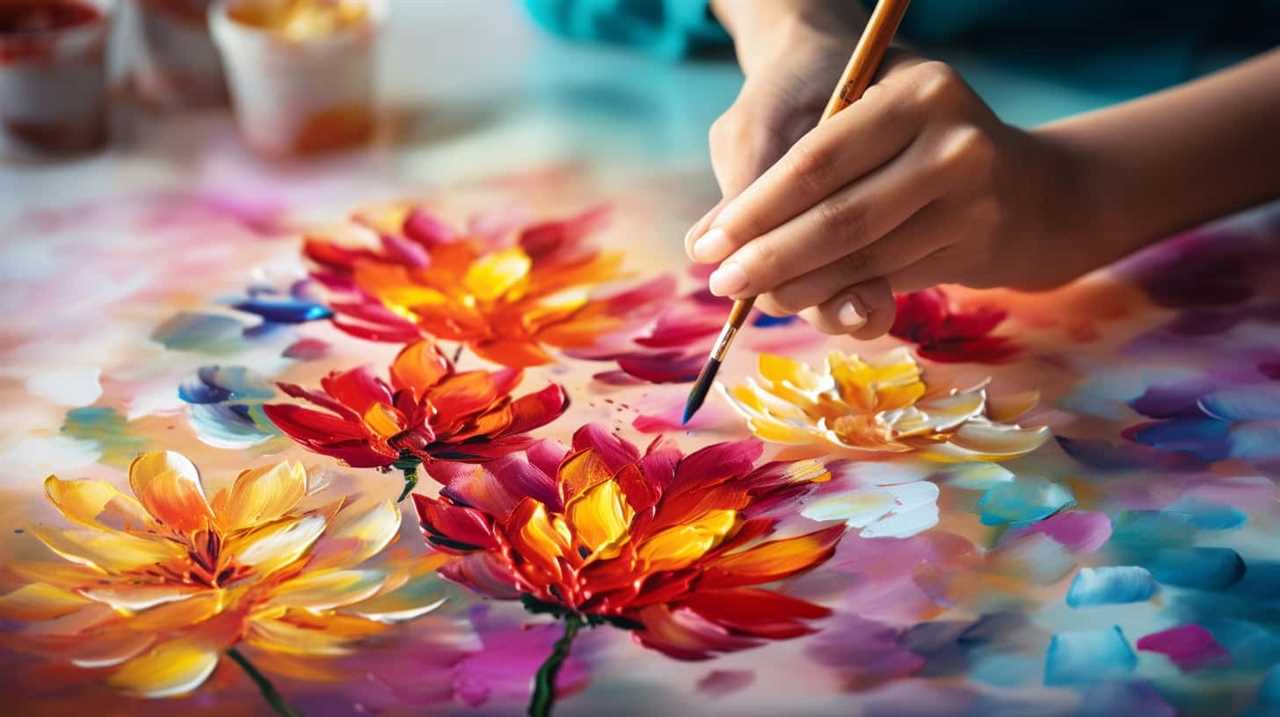
Tracey Emin on Gender Equality
Tracey Emin’s contributions to feminist art have had a profound impact on the art world.
Through her provocative and deeply personal works, she challenges societal norms and breaks down gender stereotypes.
Emin’s unapologetic exploration of femininity and sexuality serves as a powerful tool for advocating gender equality and empowering women to embrace their own narratives.
Emin’s Feminist Art
As we delve into the topic of Emin’s feminist art and her views on gender equality, it becomes evident that her work is a powerful expression of the ongoing struggle for gender parity.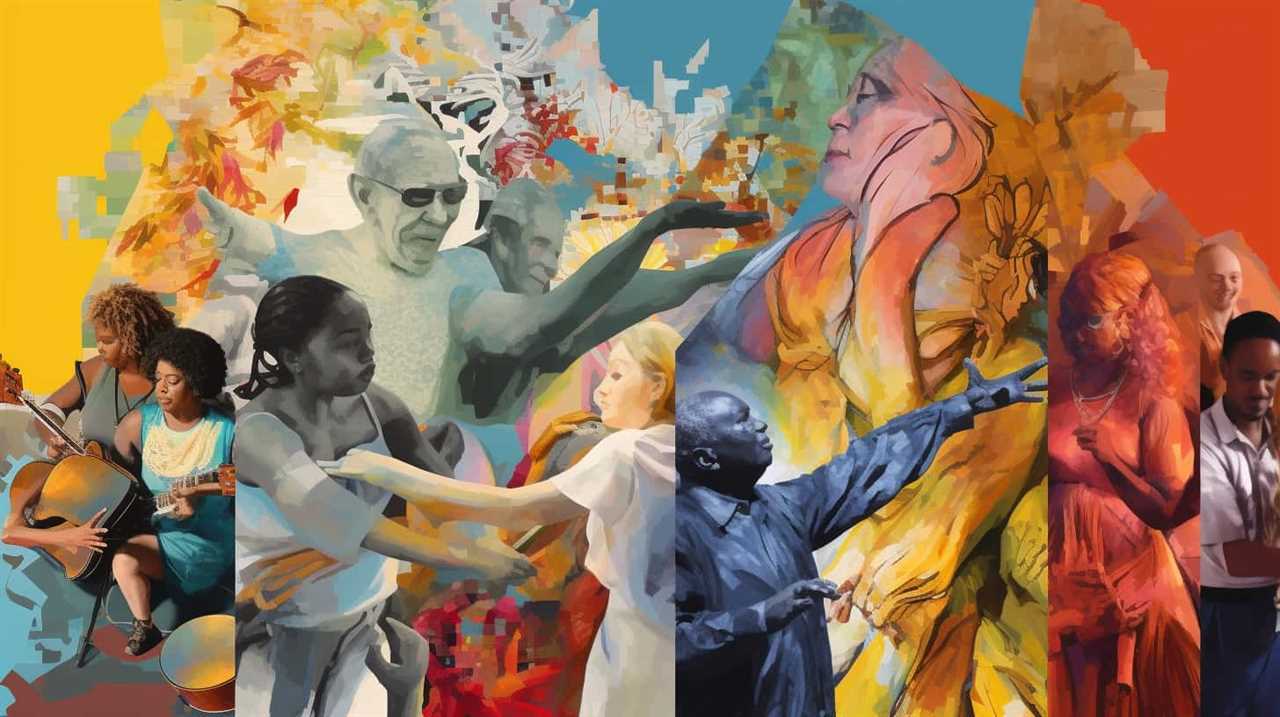
Emin’s art has had a significant impact on the feminist movement, challenging societal norms and shedding light on the challenges faced by artists in addressing gender equality.
Through her bold and provocative pieces, she confronts issues such as sexual autonomy, objectification, and the male gaze.
Emin’s artwork invites viewers to confront uncomfortable truths and question long-standing patriarchal structures.
By exploring her own personal experiences and emotions, she creates a space for dialogue and reflection.
Emin’s feminist art serves as a powerful catalyst for change, inspiring others to challenge gender inequality and strive for liberation.
Impact on Art World
In our exploration of gender equality in the art world, it is evident that Tracey Emin’s impact has been profound. Her work has not only challenged societal norms but also sparked important conversations about the representation of women in art. Emin’s unapologetic exploration of her own experiences and emotions has given a voice to countless women who have felt silenced or marginalized. Through her art, she has brought attention to the often overlooked issues faced by women, such as sexual violence and reproductive rights. Emin’s bold and raw approach has not only left a lasting impression on the art world but has also had a significant impact on society as a whole. Her fearless portrayal of female experiences has ignited a powerful movement towards greater gender equality and representation in art.
| Impact on Society | Representation in Art |
|---|---|
| Emin’s work has sparked important conversations about gender equality and women’s rights in society. | Emin’s art challenges traditional notions of representation, providing a platform for women’s experiences to be seen and heard. |
| Her bold and raw approach has brought attention to often overlooked issues faced by women. | By exploring her own experiences and emotions, Emin gives a voice to countless women who have felt silenced or marginalized. |
| Emin’s art has contributed to a larger movement towards greater gender equality and representation. | Through her work, she has paved the way for more diverse and inclusive perspectives in the art world. |
Breaking Gender Stereotypes
We artists challenge gender stereotypes through our bold and unapologetic exploration of societal norms surrounding gender equality. Our art serves as a powerful tool for breaking stereotypes and promoting inclusivity.
Artists like Tracey Emin have played a crucial role in challenging traditional gender roles through their work. Emin’s art confronts the limiting expectations placed on women and encourages a more inclusive understanding of gender. By boldly expressing her own experiences and emotions, Emin breaks free from the stereotypes that confine and marginalize women.
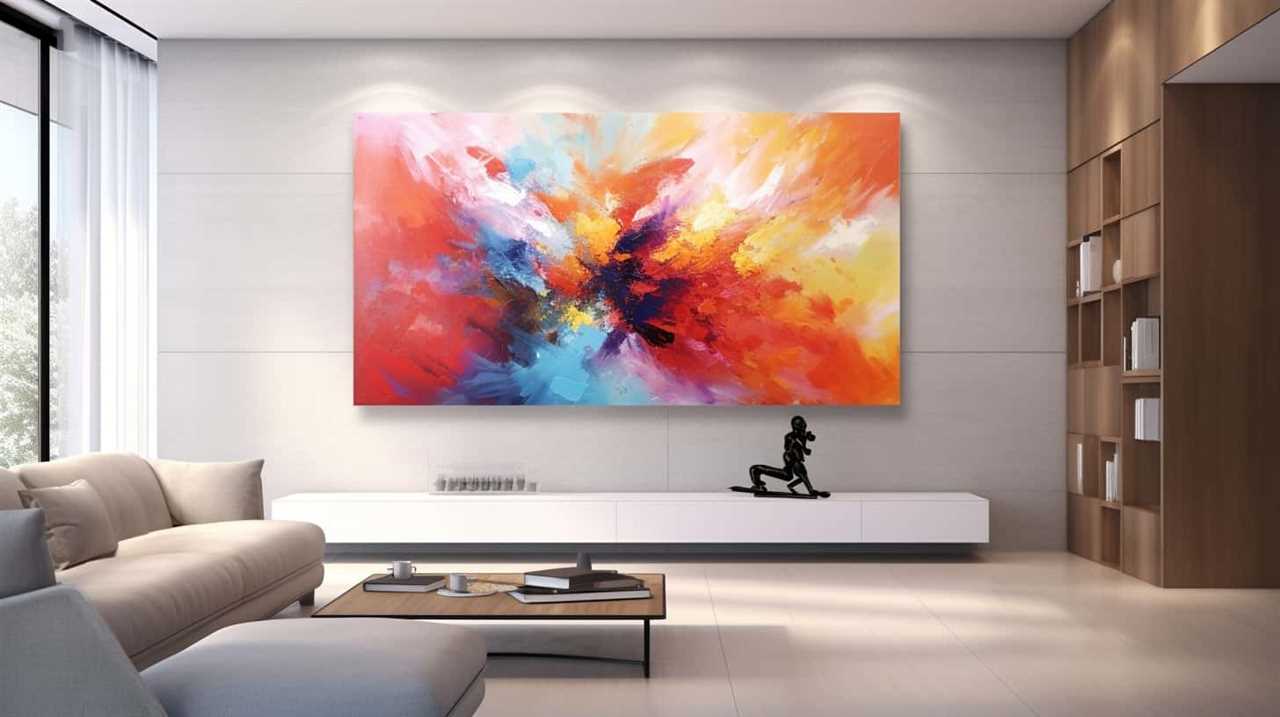
Through her art, she promotes inclusivity by challenging the notion that gender is binary and fixed. Emin’s work reminds us that breaking stereotypes isn’t only an act of rebellion, but also a necessary step towards creating a more equal and liberated society.
The Feminist Perspective of Judy Chicago
Judy Chicago’s feminist perspective has had a profound impact on the art world and the feminist movement as a whole.
Her art, particularly her iconic installation ‘The Dinner Party,’ challenged traditional gender roles and celebrated women’s achievements throughout history.
Despite her significant contributions, Chicago faced numerous challenges and backlash for her bold and unapologetic exploration of gender equality, highlighting the ongoing struggle for women’s rights and the resistance faced by feminist artists.
Chicago’s Impact on Feminism
The feminist perspective of artist Judy Chicago has had a profound impact on feminism, particularly in relation to Chicago’s contributions to the art world. Chicago’s feminist movement and her pioneering work in feminist art have challenged societal norms and paved the way for greater gender equality. Through her artwork, Chicago has brought attention to women’s experiences, highlighting the struggles and triumphs that have historically been overlooked. Her iconic installation, "The Dinner Party," celebrates the achievements of women throughout history, reclaiming their stories and giving them a place at the table. Chicago’s bold and unapologetic approach has inspired a new generation of feminist artists and activists, encouraging them to use their creativity as a tool for social change. Her work has ignited important conversations about gender, power, and representation, and continues to shape the feminist art movement in Chicago and beyond.
| Artist | Impact on Feminism | Contribution to the Art World |
|---|---|---|
| Judy Chicago | Challenged societal norms | Brought attention to women’s experiences |
| Celebrated achievements of women | Inspired a new generation of artists | |
| Ignited important conversations | Shaped the feminist art movement | |
Challenges Faced by Chicago
As we delve into the challenges faced by Chicago in her feminist perspective, it becomes evident that her bold and unapologetic approach to art hasn’t come without obstacles.
Chicago’s progress in championing gender equality has been met with resistance and criticism from various quarters. Some of the challenges she’s faced include:
- Patriarchal backlash: Chicago’s unconventional and explicit artwork challenged traditional notions of femininity, leading to patriarchal backlash and censorship attempts.
- Marginalization within the art world: Despite her groundbreaking contributions, Chicago faced marginalization within the male-dominated art world, with her work often being dismissed or overlooked.
- Lack of institutional support: Chicago struggled to secure funding and exhibition space for her ambitious projects, highlighting the systemic barriers faced by women artists.
- Misunderstanding and misinterpretation: Chicago’s work, which aimed to celebrate female experiences, was at times misinterpreted as divisive or exclusionary, hindering broader understanding of her feminist goals.
Despite these challenges, Chicago’s unwavering dedication to gender equality has left an indelible mark on the art world, inspiring future generations to challenge societal norms and push for inclusivity and liberation.
Guerrilla Girls: Advocates for Gender Equality
Since the 1980s, we’ve been relentless advocates for gender equality, the Guerrilla Girls. With our activism strategies and impactful presence in the contemporary art scene, we’ve actively fought against the patriarchal norms and inequalities that persist within the art world.
The Guerrilla Girls emerged as a collective of anonymous female artists who wore gorilla masks to protect their identities while highlighting the gender disparities in the art world. Through provocative posters, billboards, and public interventions, we’ve challenged the male-dominated art institutions and exposed the discriminatory practices that limit opportunities for women artists.
Our bold and audacious approach has had a profound impact on the contemporary art scene. By raising awareness and provoking conversations, we’ve forced the art world to confront its biases and acknowledge the need for change. Our activism has inspired countless artists, curators, and institutions to question their own practices and strive for greater inclusivity.
Furthermore, our work has helped to create a platform for underrepresented artists, particularly women and artists of color, to have their voices heard. We’ve been instrumental in breaking down barriers and creating opportunities for marginalized artists to showcase their work and contribute to the art discourse.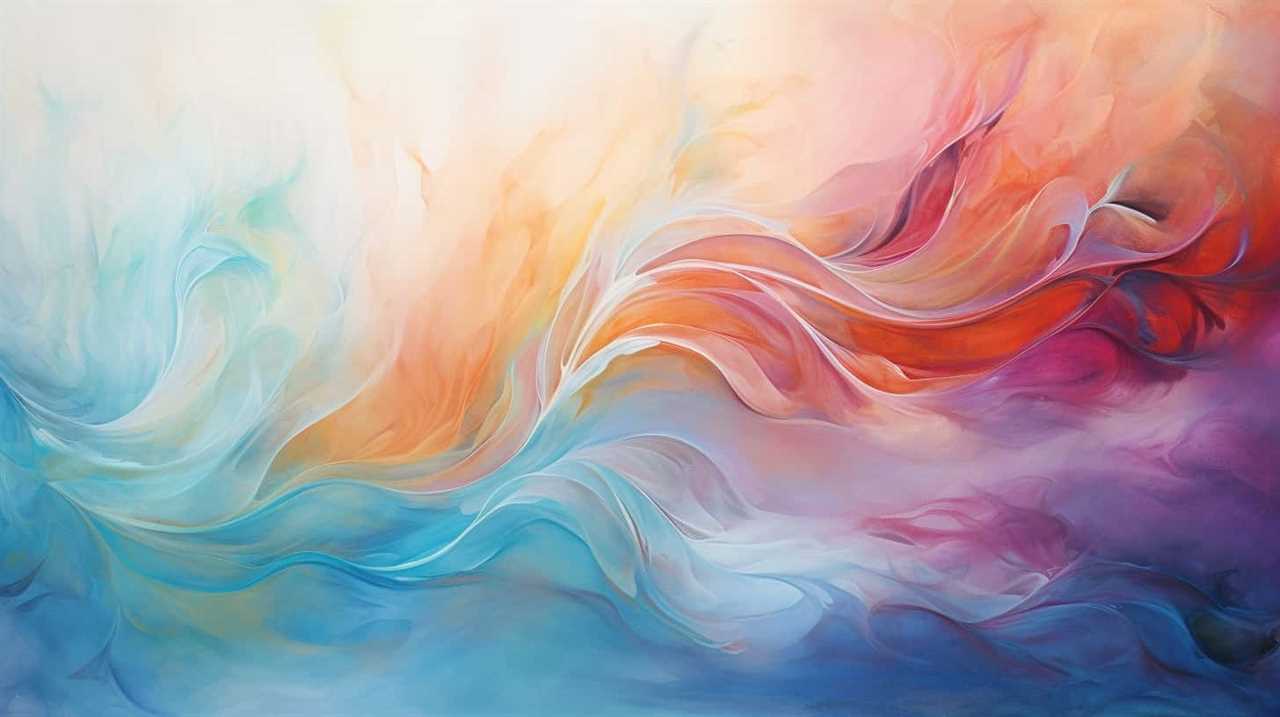
Celebrating Equality With Mickalene Thomas
We have celebrated gender equality with Mickalene Thomas. Her artwork beautifully captures the essence of celebrating female empowerment and the art of inclusivity. Thomas’s work challenges traditional notions of beauty and femininity, showcasing the diverse experiences and identities of women.
Through her use of vibrant colors and bold patterns, Thomas creates a visual language that celebrates the unique stories and voices of women. Her art invites viewers to engage with the complexities of gender, race, and sexuality, fostering a sense of inclusivity and understanding.
In celebrating equality, Mickalene Thomas reminds us of the power of representation. Her work serves as a powerful tool for amplifying marginalized voices and challenging societal norms. By showcasing women of all shapes, sizes, and backgrounds, Thomas encourages us to embrace our individuality and celebrate the beauty in our differences.
In an art world that has historically been dominated by male artists, Thomas’s work stands as a testament to the importance of diverse perspectives. Her art challenges the status quo and paves the way for a more inclusive and equitable future, where every voice is heard and celebrated.
Jenny Holzer’s Provocative Statements
Let’s delve into Jenny Holzer’s thought-provoking statements on gender equality. Holzer, an American artist known for her controversial art, has made a significant impact with her powerful and provocative statements. Her work challenges societal norms and sheds light on the inequalities faced by women. Holzer’s art often incorporates text, displayed in public spaces, that confronts viewers and forces them to question their own beliefs and biases.
One of Holzer’s most famous statements, ‘Abuse of power comes as no surprise,’ encapsulates the influence of her art. By highlighting the systemic power imbalances that perpetuate gender inequality, she calls attention to the need for change. Holzer’s words resonate with an audience that desires liberation, as they challenge the status quo and disrupt the complacency surrounding gender equality.
Holzer’s statements not only provoke thought but also spark conversation and inspire action. By exposing the uncomfortable truths about gender inequality, she encourages individuals to examine their own behavior and work towards creating a more equitable society. Her art serves as a catalyst for change, urging society to confront its own biases and strive for a future where gender equality is the norm.
The Empowering Voice of Shirin Neshat
The empowering voice of Shirin Neshat amplifies the struggle for gender equality through her captivating art and thought-provoking statements. Neshat, an Iranian artist, uses her empowering art to challenge societal norms and advocate for women’s rights. Her work is deeply rooted in her personal experiences and explores themes of identity, gender, and cultural influence.
Neshat’s art often features powerful imagery of veiled women, symbolizing the oppressive constraints placed upon women in her native Iran. Through her photographs and videos, she confronts the viewer with the realities faced by women in patriarchal societies, sparking conversations about gender equality and female empowerment.
Neshat’s cultural influence extends beyond her art. As a prominent figure in the art world, she’s used her platform to raise awareness about the challenges faced by women globally. Her thought-provoking statements challenge conventional notions of femininity and encourage dialogue about gender roles and societal expectations.
Through her empowering art and cultural influence, Shirin Neshat continues to be a voice for gender equality, inspiring others to question and challenge the status quo. Her work serves as a reminder of the power of art to provoke change and promote liberation.
Frequently Asked Questions
How Did Yoko Ono Become an Influential Figure in the Fight for Gender Equality?
Yoko Ono’s influential role in the fight for gender equality was shaped by her early activism and collaboration with the feminist art movement. Her dedication and innovative approach have made her a powerful force for change.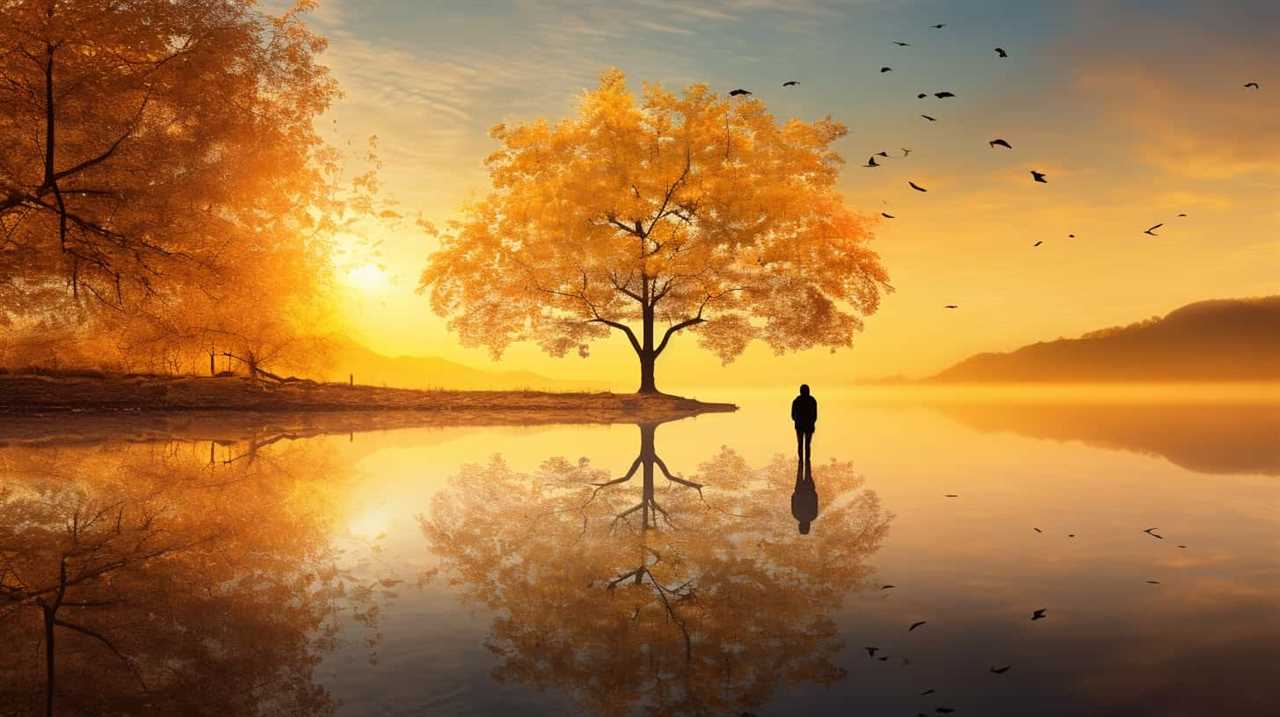
What Is the Significance of Tracey Emin’s Artwork in Relation to Gender Equality?
Tracey Emin’s artwork holds great significance in the fight for gender equality. Her raw and honest expressions challenge societal norms and empower women to embrace their true selves. Emin’s impact on gender equality is undeniable.
How Does Judy Chicago’s Feminist Perspective Inform Her Art and Activism?
Judy Chicago’s feminist perspective heavily influenced her art and activism. Her groundbreaking work, ‘The Dinner Party,’ challenged traditional notions of gender roles and celebrated women’s achievements throughout history. This piece became an iconic symbol of feminist art in the 1970s, inspiring and empowering countless individuals in the feminist movement.
What Are Some Notable Achievements of the Guerrilla Girls in Advocating for Gender Equality?
The Guerrilla Girls have made notable achievements in advocating for gender equality. Their activism has had a profound impact on the art world, challenging the male-dominated narrative and pushing for inclusivity and representation.
How Does Mickalene Thomas Celebrate and Promote Equality Through Her Artwork?
Mickalene Thomas celebrates and promotes equality through her artwork by celebrating diversity and empowering women. Her art captures the beauty, strength, and complexity of women, challenging societal norms and inspiring liberation.
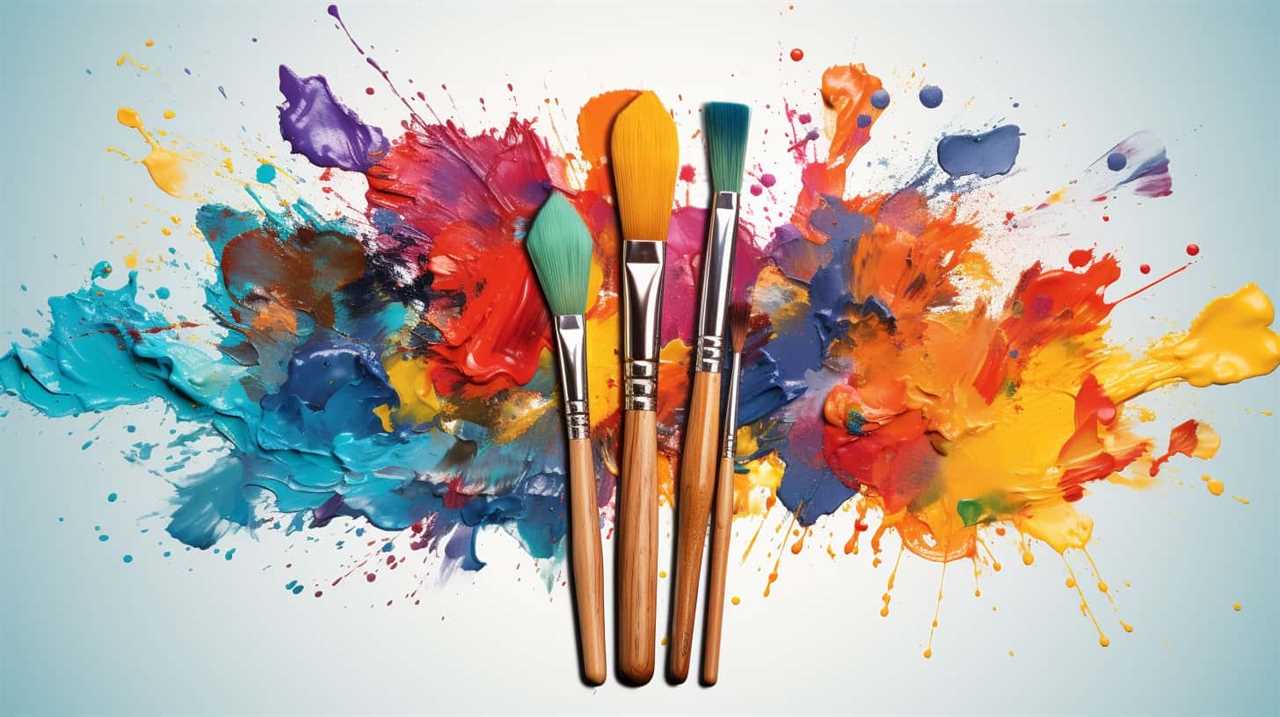
Conclusion
In exploring the powerful words of artists championing gender equality, we’ve delved into a world of thought-provoking perspectives and empowering voices.
Like a vibrant tapestry, these artists have woven together their experiences, insights, and observations into a patchwork of awareness and advocacy.
Through their art and words, they’ve shattered stereotypes, challenged societal norms, and opened doors for a more inclusive and equal world.
Their voices echo like a melody, inspiring us all to continue the fight for gender equality.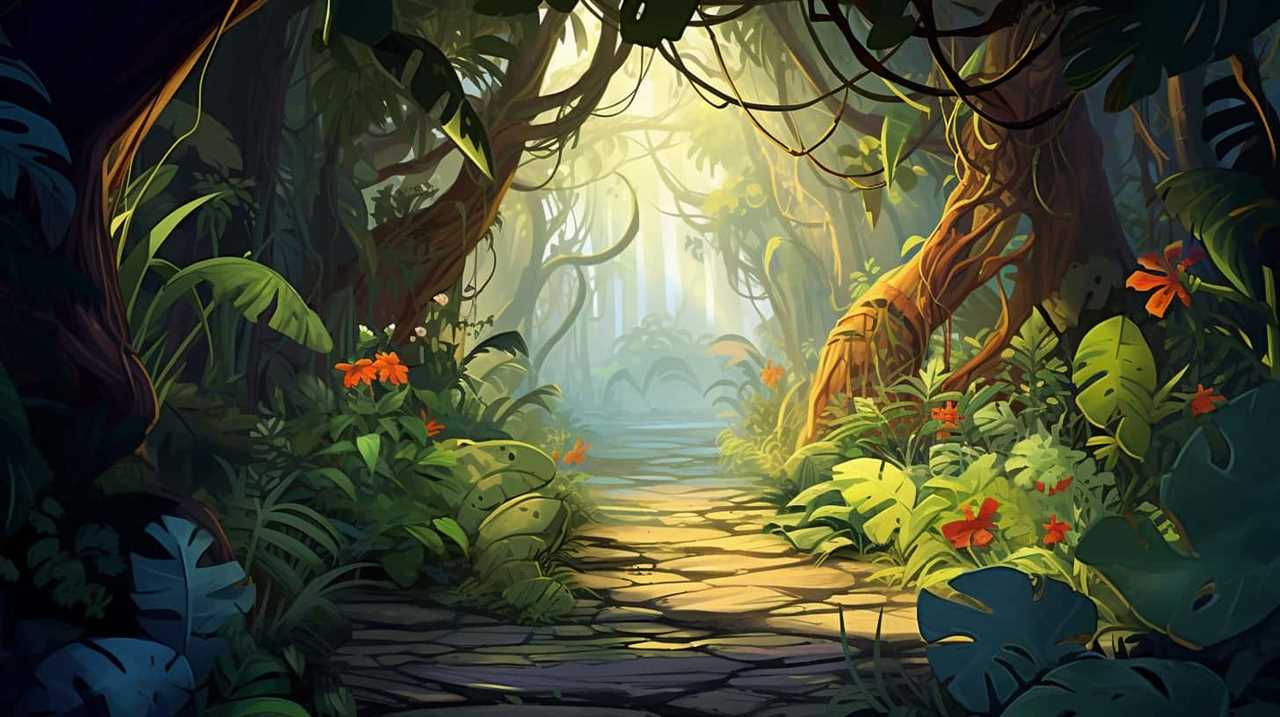
Lauren’s talent in writing is matched by her passion for storytelling. Her love for books and deep understanding of culture and entertainment add a distinct flavor to her work. As our media and press contact, Lauren skillfully bridges the gap between afterQuotes and the broader media landscape, bringing our message to a wider audience.
Art and Creativity Quotations
7 Best Empowering Quotes by Today’s Female Creatives

We discovered a wealth of inspiration, dear readers! Today, we bring you the top 7 empowering quotes from today’s female creatives.
These remarkable women have shattered glass ceilings, challenged societal norms, and unleashed their artistic prowess, leaving an indelible mark on the world.
Through their words, they ignite the fire within us, urging us to embrace our infinite potential, unleash the power of narrative, and express ourselves fearlessly.
They remind us to challenge the status quo, celebrate our authentic identities, and push boundaries to redefine art.
With their wisdom, they celebrate the strength of vulnerability and prove that it is our greatest asset.
Get ready to be uplifted, inspired, and empowered as we delve into the minds of these incredible female creatives.
Key Takeaways
- Embracing individuality and potential empowers us to pursue our passions and explore our creativity.
- Visual storytelling through art challenges societal norms and inspires change, creating a space for marginalized voices to be heard.
- Art has the transformative potential to liberate and empower individuals, allowing us to question the status quo and envision a better world.
- Embracing vulnerability is a source of strength and liberation, enabling deeper connections with others and fostering empathy and understanding.
Yayoi Kusama: Embrace Your Infinite Potential
Yayoi Kusama’s quote inspires us to embrace our infinite potential. In a world that often seeks conformity, Kusama’s words remind us of the importance of embracing our individuality. She encourages us to break free from societal expectations and find inspiration within ourselves.
Embracing our individuality is a liberating act. It allows us to fully express who we’re without fear of judgment or rejection. It empowers us to pursue our passions, explore our creativity, and discover our unique voice in the world. By embracing our individuality, we become unstoppable forces of change and innovation.
Finding inspiration is an essential part of the creative process. Kusama urges us to look within ourselves and our surroundings for that spark of inspiration. It can be found in the simplest of things – a vibrant color, a delicate flower, or a chaotic cityscape. By being open to the world around us, we can find inspiration in unexpected places.
Kusama’s quote serves as a reminder that we’re limitless beings capable of achieving extraordinary things. By embracing our individuality and finding inspiration, we can tap into our infinite potential and create a life that’s truly fulfilling. So let’s celebrate our uniqueness and fearlessly embark on a journey of self-discovery and self-expression.
Kara Walker: Unleashing the Power of Narrative
Kara Walker’s storytelling prowess unleashes the transformative power of narrative. As a female creative, she understands the importance of storytelling in liberating and empowering individuals. Here are three ways in which she unleashes the narrative power:
- Confronting history: Walker fearlessly delves into the dark and uncomfortable corners of history, using her art to challenge traditional narratives and shed light on overlooked perspectives. By confronting history head-on, she empowers her audience to question preconceived notions and seek a deeper understanding of the world.
- Provoking dialogue: Through her provocative and thought-provoking artwork, Walker sparks conversations about race, gender, and power dynamics. By encouraging dialogue, she fosters a space for open and honest discussions, challenging societal norms and encouraging introspection.
- Amplifying marginalized voices: Walker gives a voice to those who’ve been silenced by society. Her art amplifies the experiences and stories of marginalized individuals, shedding light on their struggles and triumphs. By doing so, she empowers these voices and ensures that their narratives are heard and acknowledged.
Kara Walker’s ability to unleash the power of narrative through her storytelling is a testament to the transformative potential of art. Through her work, she encourages liberation, empowerment, and a deeper understanding of the world we live in.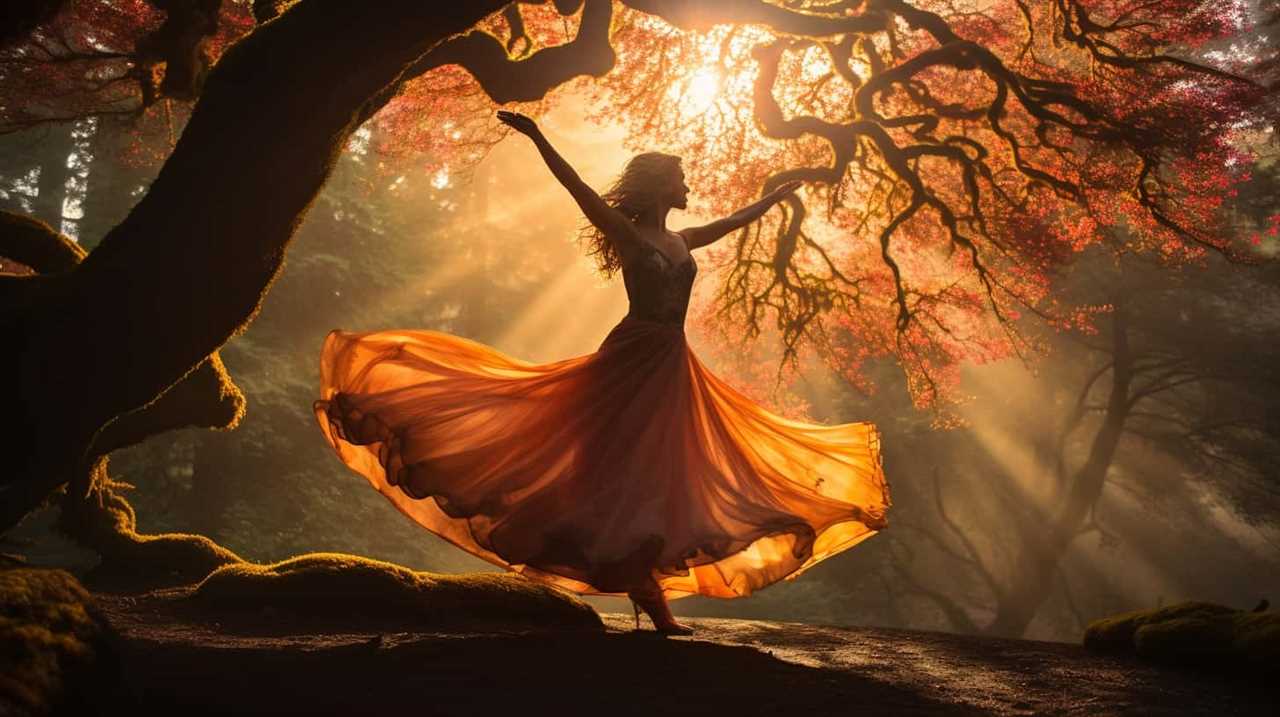
Shirin Neshat: Empowering Through Artistic Expression
When it comes to empowering through artistic expression, Shirin Neshat’s work stands out. Her art serves as a form of feminist resistance, challenging societal norms and giving a voice to marginalized women.
Through her powerful visual storytelling, Neshat has the ability to create impact and spark conversation about important issues surrounding gender, identity, and cultural boundaries.
Art as Feminist Resistance
Artistic expression serves as a powerful tool of feminist resistance, empowering individuals like Shirin Neshat to challenge societal norms and advocate for gender equality. Through her work, Neshat embodies the spirit of feminist art movements and demonstrates the potential for women’s empowerment through creativity. Here are three ways in which art serves as a vehicle for feminist resistance:
- Breaking stereotypes: Art allows women to redefine their identities and challenge traditional gender roles, breaking free from the limitations imposed by society.
- Amplifying women’s voices: Art provides a platform for women to share their experiences, perspectives, and stories, giving them a voice and raising awareness about gender inequality.
- Inspiring collective action: Art has the power to inspire and mobilize communities, fostering solidarity among women and encouraging them to stand together in the fight for gender equality.
By harnessing the power of artistic expression, Neshat and other female creatives pave the way for a more inclusive and liberated society.
This leads us to explore the impact of visual storytelling in the next section.
Impact of Visual Storytelling
Visual storytelling has a profound impact on our collective understanding and empowers us through the artistic expression of creatives like Shirin Neshat. The power of narrative in visual storytelling allows us to connect with the experiences of others, challenge societal norms, and inspire change.
Through her thought-provoking photographs and films, Neshat creates a space for marginalized voices to be heard and empowers individuals to question the status quo. Her work explores themes of identity, gender, and cultural displacement, shedding light on the complexities of the human experience.
Neshat’s artistry encourages us to confront social injustices and envision a more inclusive and liberated world. By using visual storytelling as a tool for empowerment, Neshat invites us to actively engage in the transformative power of art and create meaningful change in society.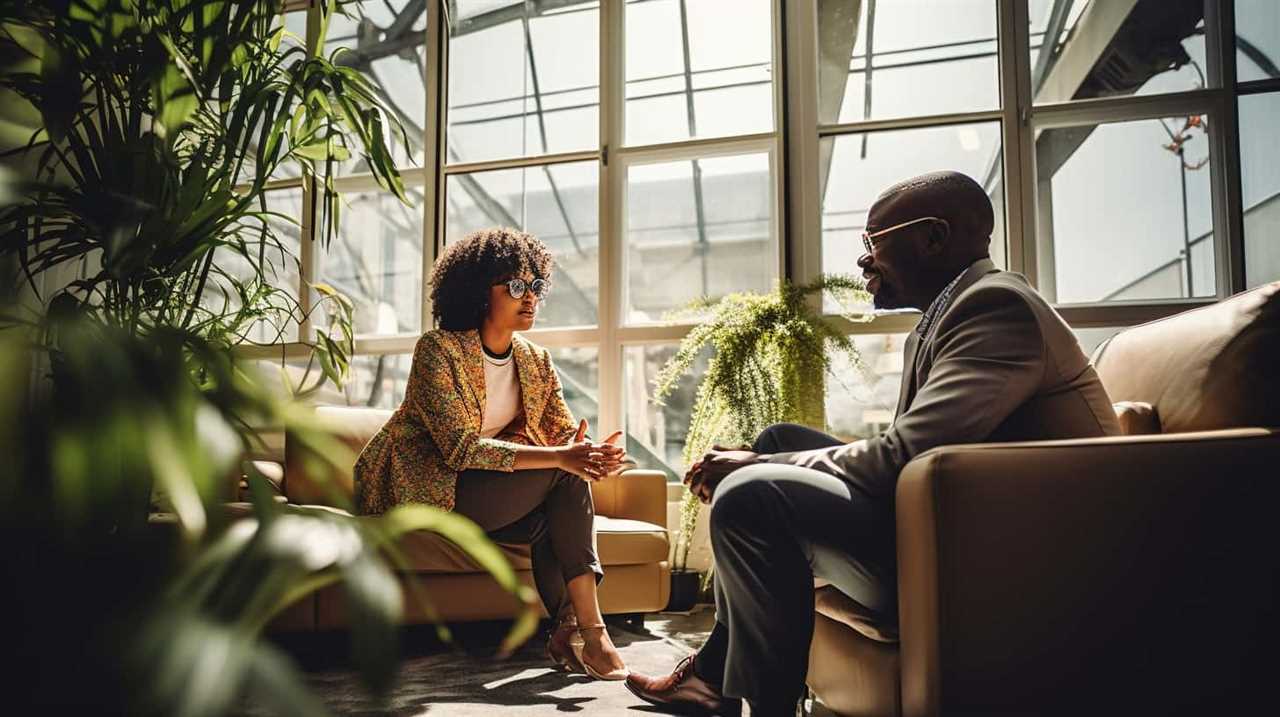
Jenny Holzer: Challenging Societal Norms
How does Jenny Holzer challenge societal norms through her creative work?
Jenny Holzer is a renowned artist who fearlessly challenges gender stereotypes and breaks artistic boundaries in her thought-provoking creations. Here are three ways in which she challenges societal norms:
- Text-based Art: Holzer incorporates powerful statements and phrases in her artwork, using mediums such as LED signs and projections. By bringing attention to social issues and questioning prevailing norms, she encourages viewers to challenge their own beliefs and perceptions.
- Public Spaces: Holzer displays her artwork in public spaces, disrupting the traditional art gallery setting. By placing her thought-provoking messages in unexpected locations, she challenges the notion that art should be confined to a specific space or audience.
- Collaboration: Holzer collaborates with diverse individuals and communities to amplify marginalized voices and experiences. By giving a platform to those who are often silenced, she challenges the dominant narrative and empowers others to do the same.
Through her artistic expression, Jenny Holzer challenges societal norms, encourages critical thinking, and promotes liberation. Her work sets the stage for the subsequent discussion about Cindy Sherman’s exploration of identity and authenticity.
Now, let’s delve into the world of Cindy Sherman and how she embraces identity and authenticity.
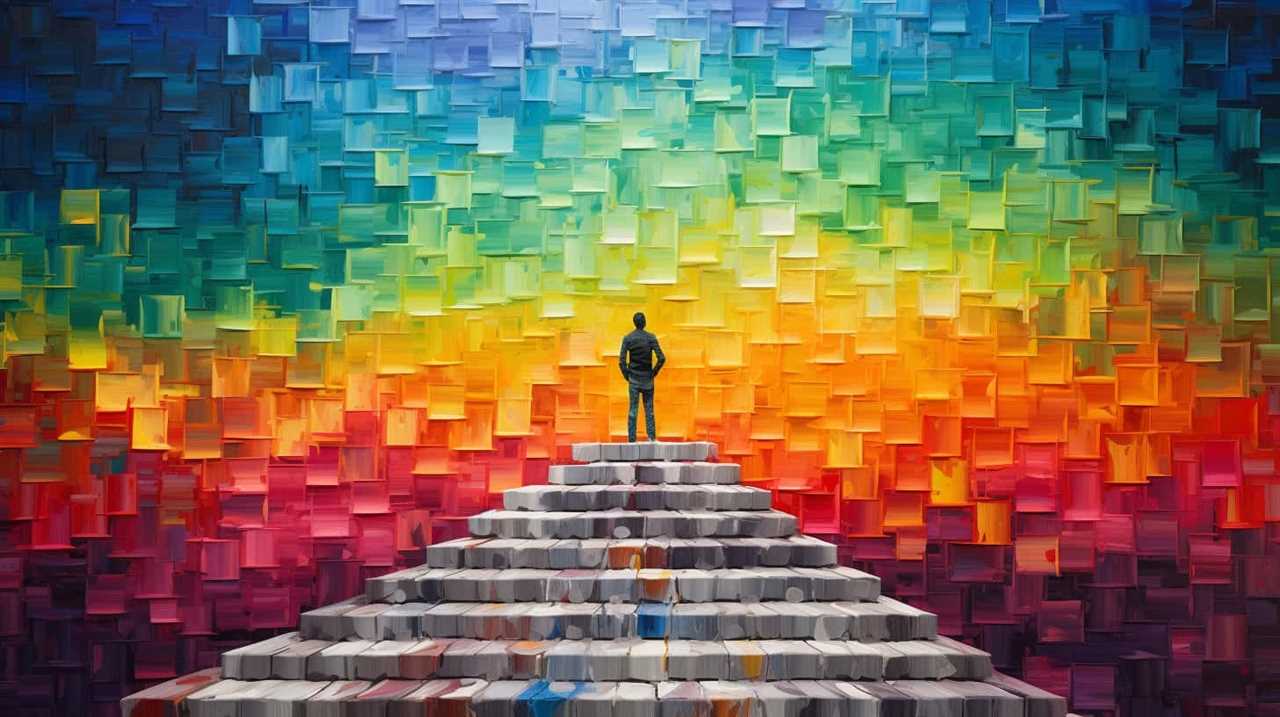
Cindy Sherman: Embracing Identity and Authenticity
Cindy Sherman’s transformative self-portraits have become iconic in the art world. Through her work, she pushes boundaries and challenges societal expectations. She embraces her identity and authenticity, fearlessly exploring different personas and roles.
Sherman’s ability to redefine herself in each photograph inspires us to question the notion of fixed identity. Her work encourages us to embrace our own individuality.
Sherman’s Transformative Self-Portraits
Sherman’s transformative self-portraits captivate with their exploration of identity and authenticity. Through her art, she delves into the depths of self-reflection, allowing viewers to question their own perceptions of themselves. Her work challenges societal expectations and redefines self-perception in the following ways:
- Exploring Different Identities: Sherman’s photographs showcase a range of characters, each with their own unique story and identity. She encourages us to embrace the multitude of selves that exist within us.
- Breaking Stereotypes: By stepping into various roles and personas, Sherman dismantles societal stereotypes and challenges the limitations placed on individuals based on gender, age, and appearance.
- Confronting Authenticity: Sherman’s self-portraits force us to confront the notion of authenticity. She questions what it means to be true to oneself in a world that often imposes expectations and masks.
Sherman’s transformative self-portraits open up a world of self-exploration and liberation, inviting us to challenge societal expectations and embrace our true identities.
Challenging Societal Expectations
Continuing the exploration of identity and authenticity, we challenge societal expectations by embracing our true identities and confronting the limitations imposed on us. Breaking stereotypes and empowering individuality are crucial in our quest for liberation.
Cindy Sherman, through her transformative self-portraits, exemplifies this defiance against societal norms. By using her photographs to challenge and subvert conventional notions of femininity, she encourages us to question and redefine how we perceive ourselves and others. Sherman’s work serves as a powerful reminder that we’ve the agency to shape our own identities and challenge the boxes that society tries to place us in.
As we delve into the next section about Marina Abramović and her boundary-pushing art, we continue to explore the ways in which artists challenge societal expectations and redefine the boundaries of creativity.
Marina Abramović: Pushing Boundaries and Redefining Art
How does Marina Abramović push boundaries and redefine art?
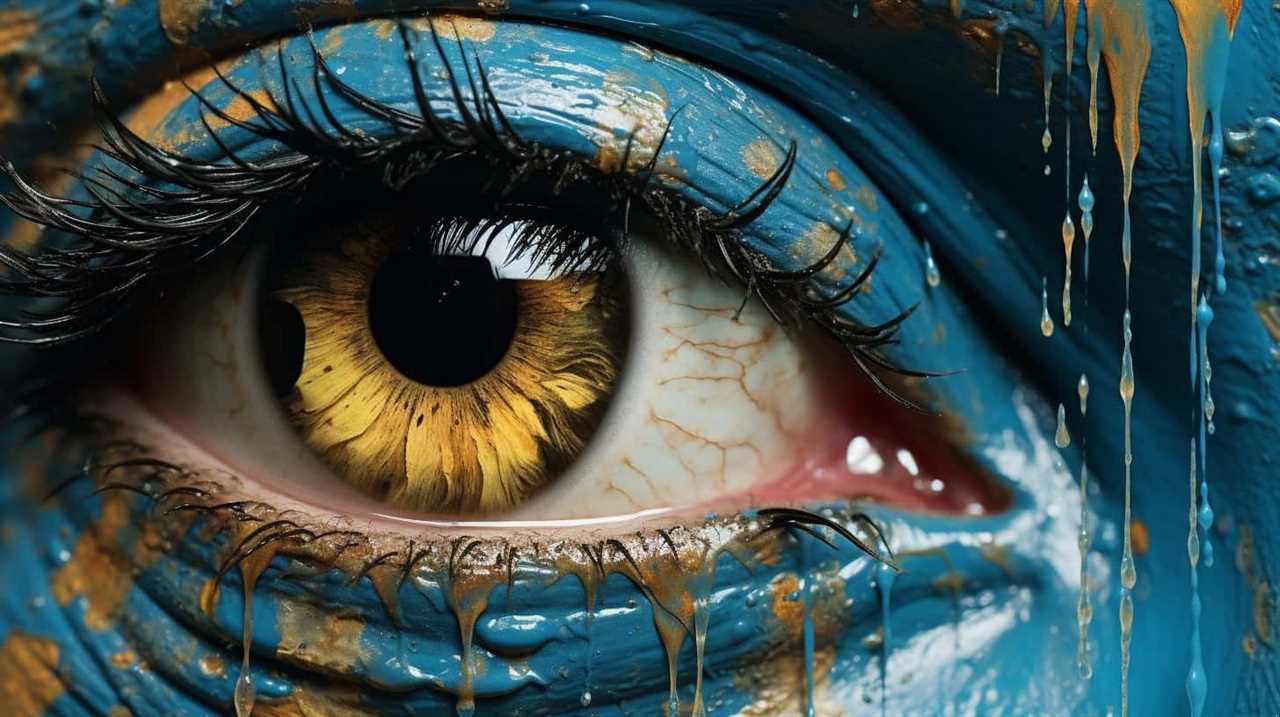
Marina Abramović is a renowned performance artist who continuously challenges the limits of human endurance and redefines the boundaries of art. Here are three ways she accomplishes this:
- Physical and Emotional Limits: Abramović’s performances often involve intense physical and emotional experiences that push the boundaries of what the human body and mind can endure. Through her endurance-based works, she forces viewers to confront their own limitations and question societal expectations of art.
- Audience Participation: Abramović actively involves the audience in her performances, blurring the line between artist and spectator. By breaking down this traditional barrier, she challenges the notion of passive observation and encourages active engagement, allowing viewers to become co-creators in the artistic experience.
- Provocation and Controversy: Abramović’s work often sparks controversy and challenges societal norms. Through her provocative and boundary-pushing performances, she forces us to question established conventions and confront uncomfortable truths. By pushing these boundaries, she opens up new possibilities for artistic expression and challenges the status quo.
Marina Abramović’s fearless exploration of boundaries in performance and her relentless efforts to redefine art through endurance have made her an influential figure in the art world, inspiring countless artists to push their own boundaries and break free from limitations.
Tracey Emin: Celebrating the Strength of Vulnerability
Tracey Emin’s celebration of the strength of vulnerability is a powerful testament to our collective ability to embrace and overcome our own weaknesses. She reminds us that there’s strength in vulnerability, and that by embracing our imperfections, we can find liberation and empowerment.
Emin’s artwork often delves into deeply personal experiences and emotions, exposing her vulnerabilities to the world. Through her honesty and openness, she challenges societal norms and expectations, encouraging us to do the same. She shows us that vulnerability isn’t a weakness, but a source of strength and authenticity.
By embracing our imperfections, we can break free from the constraints of perfectionism and societal pressure. Emin’s work encourages us to be unapologetically ourselves, to embrace our flaws and vulnerabilities, and to celebrate our unique journeys.
In a world that often prizes strength and invulnerability, Emin’s celebration of vulnerability is a radical act of self-acceptance. It reminds us that we’re all human, with our own struggles and weaknesses. And by embracing these aspects of ourselves, we can find the strength to overcome obstacles, grow, and thrive.
Emin’s message is clear: our vulnerabilities don’t define us; they empower us. They allow us to connect with others on a deeper level and to embrace our own humanity. Through her art, Emin encourages us to embrace vulnerability as a source of strength and liberation.
Frequently Asked Questions
What Is Yayoi Kusama’s Background and How Did She Become a Successful Artist?
Yayoi Kusama’s journey to success was shaped by her unique background and artistic vision. Her innovative approach to art and exploration of themes like mental health and feminism have had a profound influence on contemporary art.

Are There Any Specific Themes or Messages That Kara Walker Explores in Her Artwork?
Kara Walker’s artwork delves into the exploration of race and history, as well as the examination of power dynamics and stereotypes. Her thought-provoking pieces challenge societal norms and invite us to question the narratives we’ve been taught.
How Does Shirin Neshat Use Her Artistic Expression to Empower Women?
Shirin Neshat’s artistic expression is a powerful tool for empowering women. Her work challenges societal norms and amplifies the voices of women, inspiring a sense of liberation and strength. The impact of Neshat’s art on female empowerment is profound and transformative.
What Societal Norms Does Jenny Holzer Challenge Through Her Artwork?
Jenny Holzer’s artwork challenges societal norms by questioning gender expectations and authority figures. Through her powerful words and thought-provoking installations, she encourages us to question and challenge the status quo.
How Does Cindy Sherman’s Work Reflect Her Exploration of Identity and Authenticity?
Cindy Sherman’s work reflects her exploration of self and feminine identity. Through her photographs, she challenges societal norms and questions the authenticity of identity. Her art invites us to question and liberate ourselves.
Conclusion
These empowering quotes by today’s female creatives remind us of the infinite potential we possess and the power of artistic expression. They challenge societal norms, celebrate vulnerability, and push boundaries to redefine art.
Through their work, Yayoi Kusama, Kara Walker, Shirin Neshat, Jenny Holzer, Cindy Sherman, Marina Abramović, and Tracey Emin inspire us to embrace our identity, authenticity, and strength.
Their words and art serve as a powerful reminder that we’ve the ability to shape our own narratives and make a difference in the world.
Lauren’s talent in writing is matched by her passion for storytelling. Her love for books and deep understanding of culture and entertainment add a distinct flavor to her work. As our media and press contact, Lauren skillfully bridges the gap between afterQuotes and the broader media landscape, bringing our message to a wider audience.
Art and Creativity Quotations
Feminist Artists Speak: Quotes on Social Issues

At Feminist Artists Speak: Quotes on Social Issues, we firmly believe in the ability of art to challenge and reform society. By highlighting the viewpoints of feminist artists, we explore a range of social issues affecting women and marginalized communities.
From the eloquent words of Frida Kahlo, who said, ‘I paint my own reality,’ to the bold statements of Guerrilla Girls, who demand gender equality in the art world, we celebrate the diversity and strength of feminist art.
Our collection of quotes delves into topics such as breaking gender stereotypes, addressing violence against women, and reclaiming female identity.
Join us as we use art as a tool for social change and empower women through artistic expression.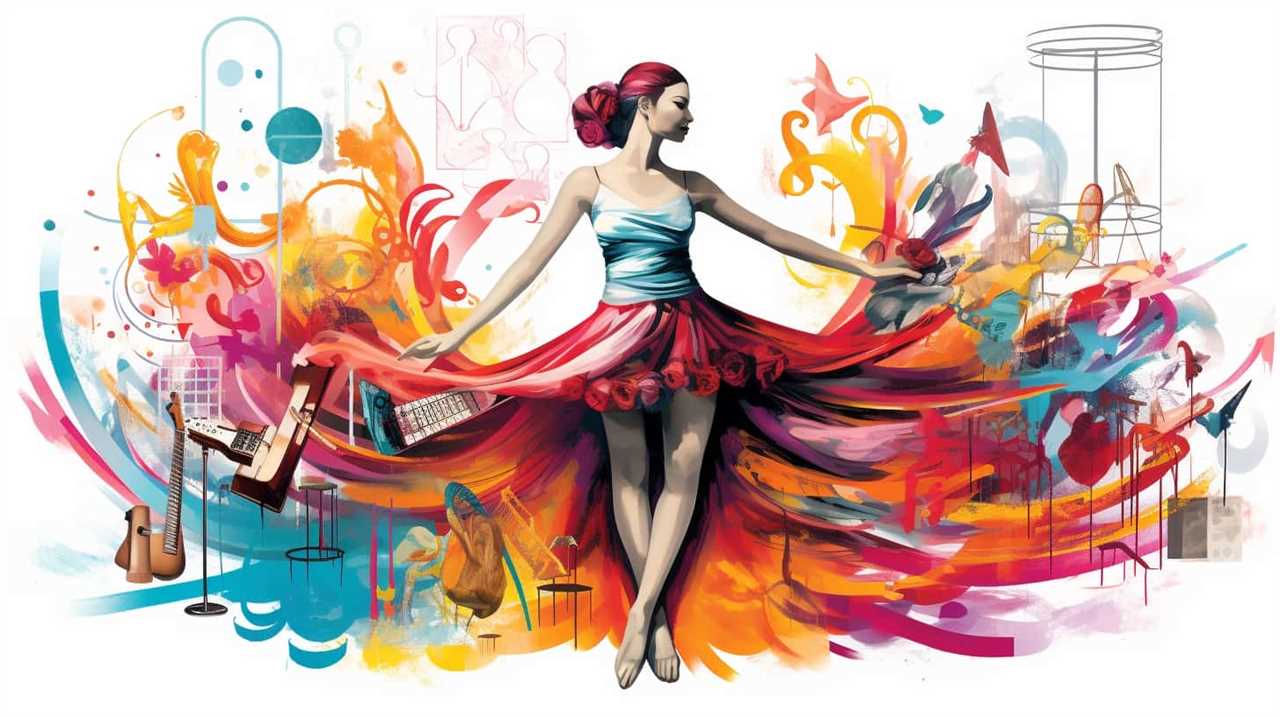
Key Takeaways
- Feminist artists use their art to challenge traditional norms and expose the flaws and limitations of social constructs.
- Artwork breaks the mold of traditional gender roles and embraces gender fluidity, emphasizing the importance of intersectionality.
- Feminist artists shed light on the ways in which patriarchy marginalizes women and actively contribute to the fight for gender equality.
- Through their art, feminist artists amplify marginalized voices, subvert gender stereotypes, and critique power dynamics in patriarchal systems.
The Power of Artistic Expression
Artistic expression holds immense power in shaping societal perspectives and challenging the status quo. Through artistic innovation, artists have the ability to explore and dismantle social constructs that perpetuate inequality and oppression. Art has the potential to provoke thought, evoke emotions, and initiate important conversations that can lead to societal change.
Artistic innovation allows artists to push boundaries and challenge traditional norms, providing a fresh perspective on social issues. By using various mediums such as painting, sculpture, photography, and performance art, artists can convey powerful messages that resonate with individuals on a deep level. Through their work, they can shed light on the complexities of social constructs, exposing their flaws and limitations.
Exploring social constructs through art can bring attention to issues such as gender inequality, racism, and systemic injustice. It allows for a critical examination of societal norms and expectations, encouraging individuals to question and challenge the established order. By presenting alternative narratives and perspectives, artists can inspire viewers to think differently and consider new possibilities.
As we delve into the subsequent section on ‘breaking gender stereotypes’, it’s important to recognize that artistic expression plays a crucial role in dismantling these harmful stereotypes. Through art, artists can challenge gender norms, defy societal expectations, and empower individuals to embrace their authentic selves. Artistic expression has the power to liberate individuals from the confines of gender roles and foster a more inclusive and equitable society.
Breaking Gender Stereotypes
Through our artwork, we aim to challenge and dismantle gender stereotypes that perpetuate inequality and limit individual expression. In redefining masculinity and promoting gender equality, we strive to create a world where all individuals can freely express themselves without the constraints of societal expectations.
- Breaking the Mold: Our artwork seeks to break the mold of traditional gender roles, showcasing individuals who defy stereotypes and embrace their authentic selves. By challenging the notion that masculinity is synonymous with aggression and dominance, we encourage a more inclusive and diverse understanding of what it means to be a man.
- Embracing Fluidity: We celebrate the beauty of gender fluidity and reject the binary concept of gender. Our artwork explores the idea that gender isn’t fixed, but rather a spectrum that allows for endless possibilities of self-identification. By embracing gender fluidity, we challenge the rigid norms that confine individuals to predetermined roles based on their assigned sex.
- Intersectionality Matters: Recognizing the interconnected nature of social identities, we emphasize the importance of addressing gender stereotypes within the context of race, class, sexuality, and other intersecting factors. By acknowledging the unique experiences of individuals who face multiple forms of discrimination, we strive to create a more inclusive and equitable society.
- Empowering through Representation: By depicting diverse and empowered characters in our artwork, we aim to inspire and uplift marginalized communities. Through positive representation, we challenge the harmful stereotypes that have historically marginalized and silenced individuals based on their gender identity. Our art aims to provide a platform for marginalized voices and promote a more inclusive understanding of gender.
Challenging Patriarchal Norms
When it comes to challenging patriarchal norms, feminist artists have played a crucial role in disrupting traditional power structures and advocating for gender equality.
Through their art, they’ve confronted and critiqued the oppressive systems that perpetuate patriarchy, shedding light on the ways in which it marginalizes and suppresses women.
Feminist Art Impact
How can feminist artists actively challenge patriarchal norms through their work?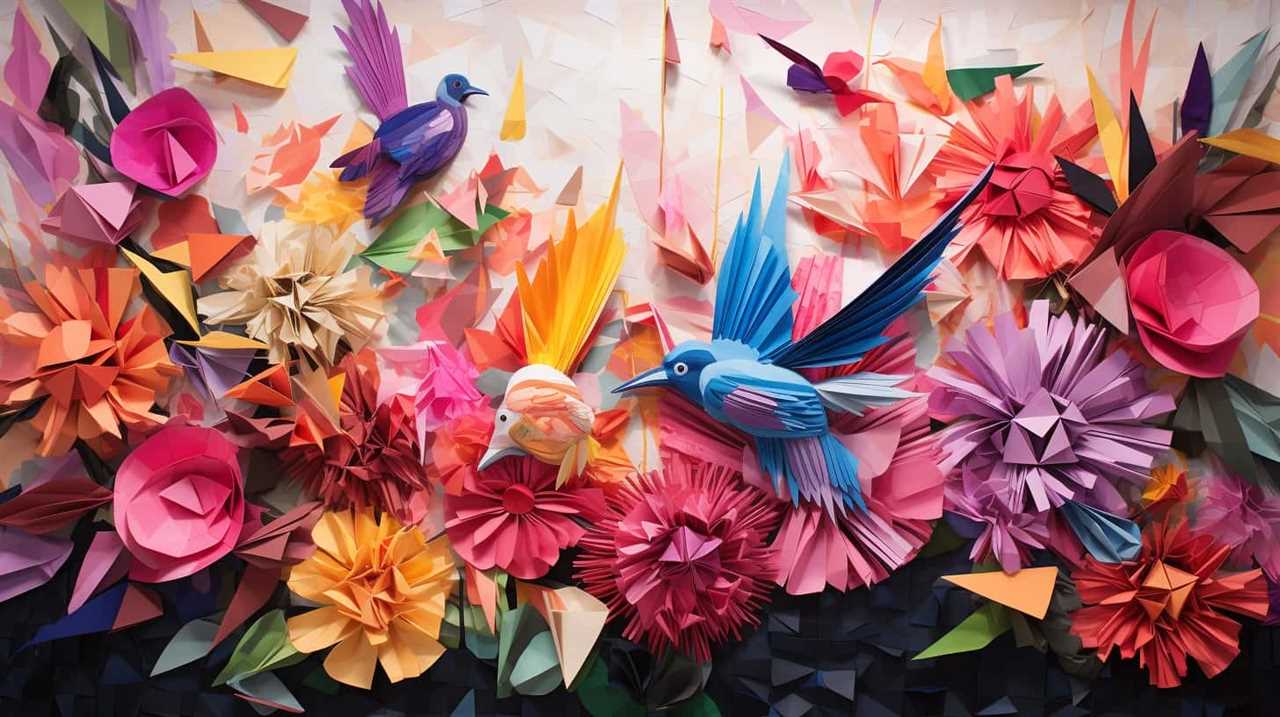
Feminist art impact goes beyond creating aesthetically pleasing pieces; it’s about promoting inclusivity and challenging the status quo. Here are some ways feminist artists can achieve this:
- Using their art to amplify marginalized voices, giving them a platform to be heard and seen.
- Subverting traditional gender roles and stereotypes in their work, challenging the binary notion of gender.
- Creating art that addresses and critiques the power dynamics embedded in patriarchal systems.
- Collaborating with other artists and communities to create a collective movement towards liberation.
By actively challenging patriarchal norms through their work, feminist artists contribute to the ongoing fight for gender equality and social justice. Their art has the power to inspire, provoke thought, and ignite change.
Now, let’s delve into the next section about breaking gender stereotypes.
Breaking Gender Stereotypes
What are some effective ways for feminist artists to challenge patriarchal norms and break gender stereotypes?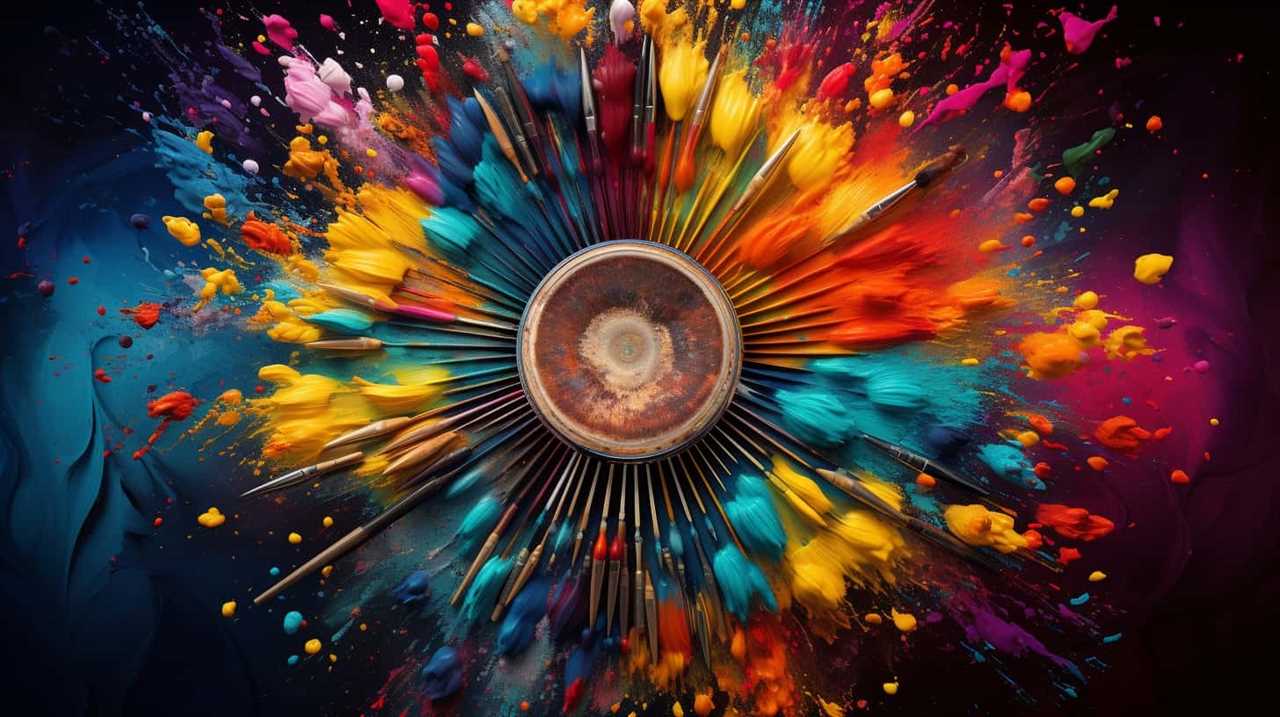
One powerful approach is promoting inclusivity within their artwork. By featuring a diverse range of identities and experiences, feminist artists can challenge the notion that there’s a singular, dominant narrative of femininity or masculinity.
By showcasing the beauty and strength in all forms of gender expression, these artists redefine masculinity and challenge the narrow expectations placed on individuals based on their gender.
Through their work, feminist artists can inspire viewers to question and challenge societal norms, fostering a more inclusive and accepting society.
Empowering Marginalized Voices?
Feminist artists actively challenge patriarchal norms by empowering marginalized voices and dismantling oppressive systems. They believe in amplifying underrepresented voices and promoting inclusivity and diversity.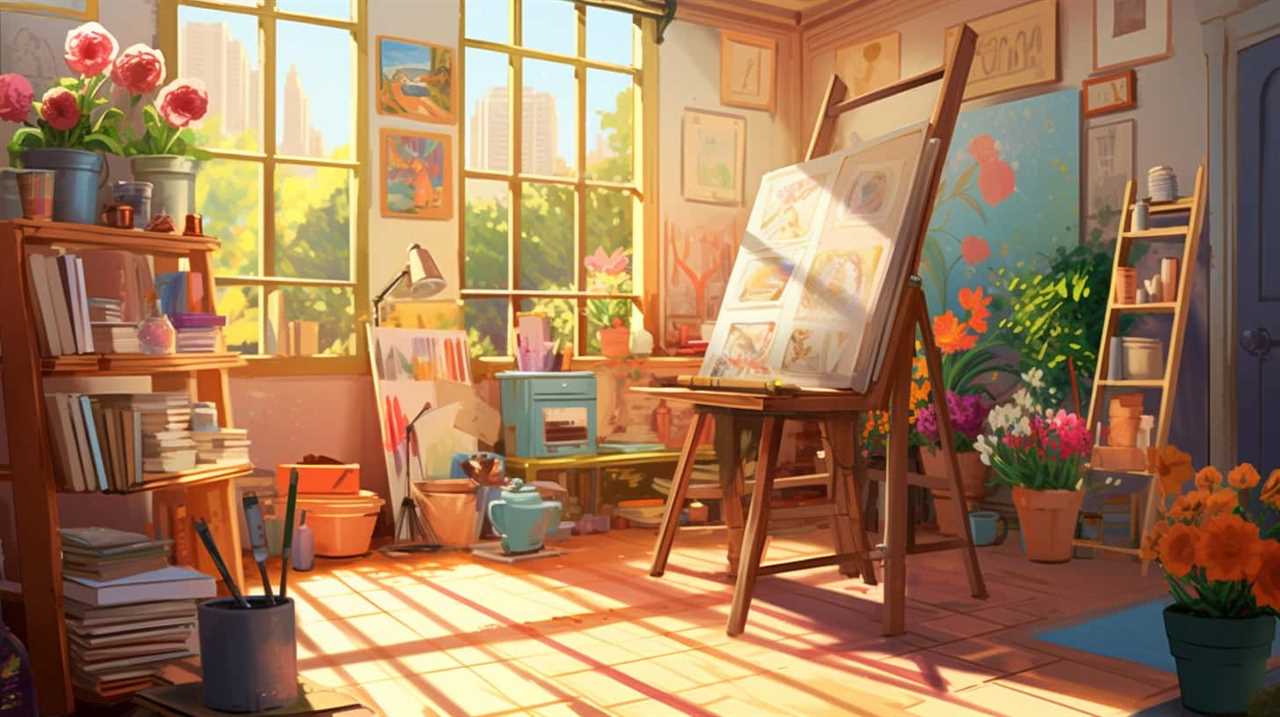
Through their art, they aim to create spaces that allow for the expression of diverse experiences and perspectives. By centering the stories of those who’ve historically been silenced or marginalized, feminist artists challenge societal norms and push for a more equitable and just world. They use their platforms to shed light on the experiences of women of color, LGBTQ+ individuals, disabled individuals, and other marginalized groups.
Through their work, they strive to break down the barriers that prevent these voices from being heard and to create a society that values and respects the experiences of all individuals.
Transitioning into the subsequent section about ‘addressing violence against women’, it’s clear that feminist artists play a crucial role in advocating for the rights and safety of all women.
Addressing Violence Against Women
We stand against violence towards women and actively work towards its eradication. Combating domestic violence and promoting a consent culture are crucial aspects of our feminist art movement. Through our artistic expressions, we aim to shed light on the pervasive issue of violence against women and challenge the societal norms that perpetuate it.
Feminist artists utilize various mediums to address this issue, from visual art and performance to literature and film. By creating thought-provoking pieces that explore the experiences of survivors, we strive to raise awareness and foster empathy. Our art serves as a powerful tool to initiate conversations about the root causes of violence against women and the urgent need for change.
Furthermore, we recognize that violence against women intersects with other forms of oppression, such as racism, ableism, and homophobia. Our art embraces intersectionality, acknowledging the unique experiences and challenges faced by women of different backgrounds. By amplifying their voices and stories, we aim to dismantle the systems of power that perpetuate violence and discrimination.
As feminist artists, we believe that art has the potential to inspire social change and challenge the status quo. By addressing violence against women in our work, we hope to contribute to a world where all women can live free from fear and violence.
In the next section, we’ll examine how feminist art embraces intersectionality and explores the interconnectedness of social issues.

Intersectionality in Feminist Art
As feminist artists, our goal is to explore the interconnectedness of social issues through the lens of intersectionality in our art. We believe that addressing the complexities of gender inequality requires acknowledging and addressing the various intersecting identities and systems of oppression that individuals experience. In our artwork, we strive to amplify the voices of marginalized communities and challenge the traditional narratives that perpetuate discrimination.
To evoke an emotional response from our audience, we incorporate the following elements in our art:
- Racial diversity: We celebrate the beauty and strength of diverse racial backgrounds, recognizing that the struggle for gender equality is intertwined with racial justice. Through our art, we aim to challenge stereotypes and highlight the experiences of women of color.
- LGBTQ+ representation: We believe that the fight for gender equality can’t be separated from the fight for LGBTQ+ rights. Our art seeks to create visibility and representation for queer and transgender individuals, fostering a more inclusive and accepting society.
- Intersectional narratives: We tell stories that reflect the complexity of lived experiences, exploring the intersectionality of race, gender, sexuality, and other identities. By showcasing these narratives, we hope to foster empathy and understanding among our audience.
- Challenging power structures: Our art confronts the power dynamics that contribute to gender inequality and encourages critical reflection. Through visual and conceptual techniques, we aim to provoke thought and inspire action towards dismantling oppressive systems.
Reclaiming Female Identity
In reclaiming our female identity, we strive to redefine societal norms and challenge the expectations placed upon women. Female empowerment is at the heart of this movement, as we seek to dismantle the restrictive constructs that have long confined and limited us. By redefining femininity, we aim to break free from the narrow definitions and stereotypes that have been imposed upon us, allowing us to embrace the full spectrum of our identities and experiences.
This process involves questioning and rejecting the notion that there’s a singular, fixed way to be a woman. We celebrate the diversity and complexity of our experiences, recognizing that there’s no one-size-fits-all definition of femininity. We reject the pressure to conform and instead encourage individuality, authenticity, and self-expression.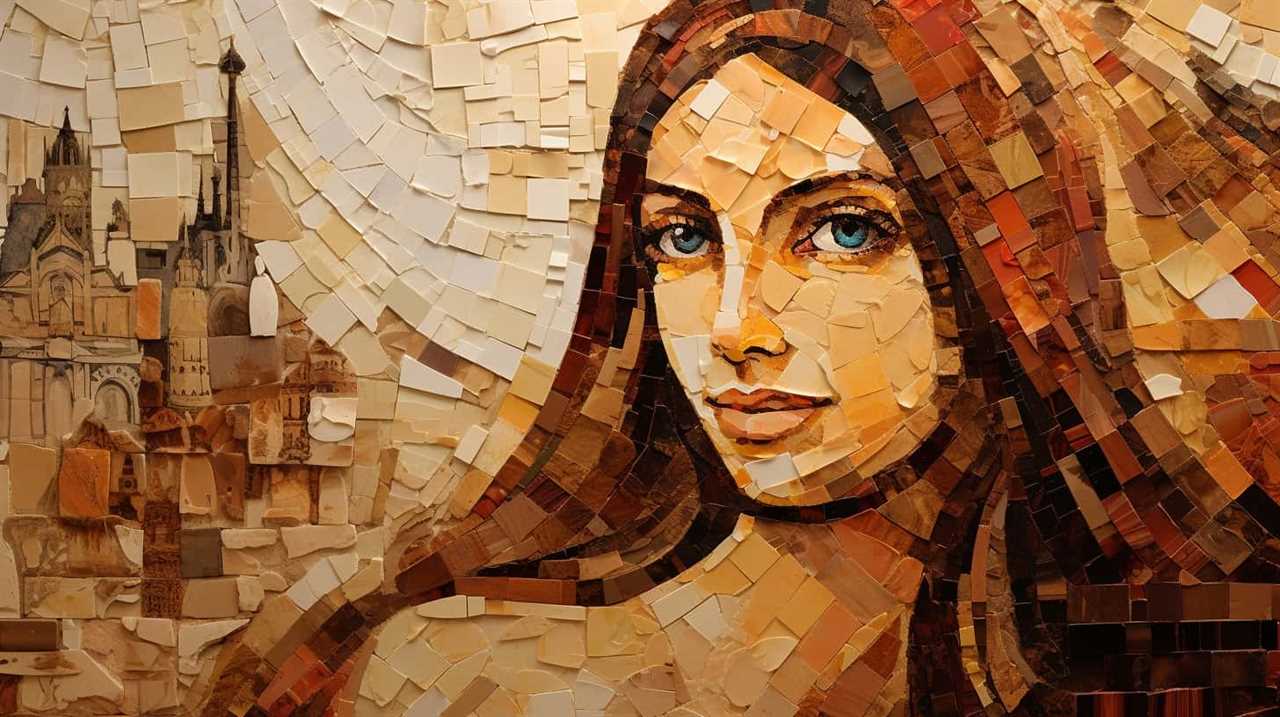
Reclaiming our female identity is an act of defiance against the patriarchal systems that seek to control and diminish us. It’s a powerful affirmation of our worth, agency, and autonomy. By challenging societal norms and expectations, we pave the way for a more inclusive and equitable world, where all individuals are free to explore and express their true selves.
As we reclaim and redefine our female identity, we confront the deeply ingrained body image issues that have plagued women for centuries.
Confronting Body Image Issues
Confronting the deeply ingrained body image issues that have plagued women for centuries, we aim to challenge societal standards of beauty and promote self-acceptance. Body positivity and media representation play crucial roles in this ongoing battle. Here are some key aspects to consider:
- Diverse Representation: We demand media to showcase a diverse range of body types, sizes, and shapes. By celebrating all bodies, regardless of societal norms, we break down the harmful notion that there’s only one ‘ideal’ body.
- Challenging Beauty Standards: It’s essential to question and dismantle the unrealistic and unattainable beauty standards imposed on women. We must reject the idea that our worth is determined solely by our appearance.
- Embracing Individuality: Each person is unique, and our bodies tell our stories. By embracing our individuality, we empower ourselves and others to appreciate and love the bodies we inhabit.
- Promoting Self-Acceptance: Body positivity encourages us to accept ourselves as we are, flaws and all. It’s about embracing our bodies with kindness, compassion, and respect, rather than striving for an unattainable perfection.
Confronting body image issues requires us to challenge the status quo, redefine beauty on our own terms, and foster a culture of self-acceptance and liberation. Together, we can create a world where all bodies are celebrated and accepted, free from the constraints of societal expectations.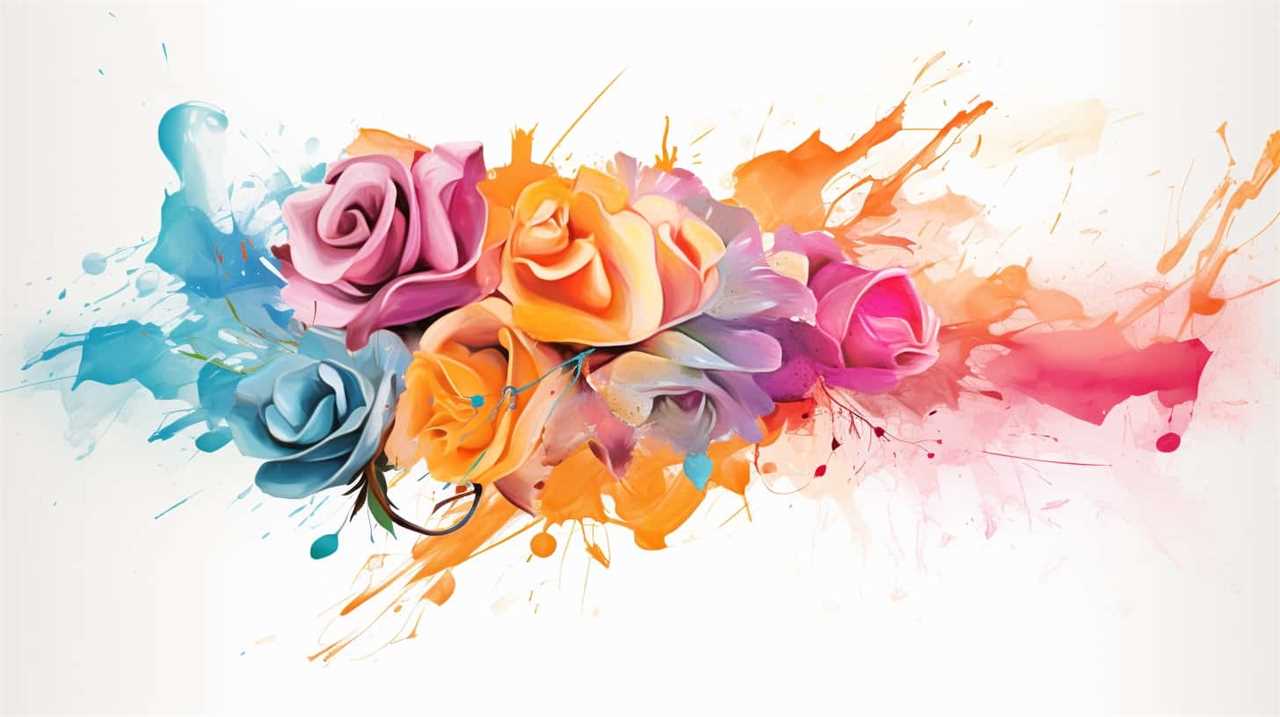
Art as a Tool for Social Change
Artists have always been at the forefront of using their creative expression as a powerful tool for driving social change. Through their work, they’ve the ability to cultivate empathy and inspire collective action.
Art has the unique ability to communicate complex social issues in a way that resonates with people on a deep emotional level. It can challenge existing norms, provoke thought, and ignite conversations that lead to change.
One way artists achieve this is by cultivating empathy through their art. They’ve the power to create a connection between the viewer and the subject matter, allowing individuals to see the world through someone else’s eyes. By depicting the experiences and struggles of marginalized communities, artists can evoke a sense of empathy in the audience, helping them to understand and relate to the issues at hand.
Another way art drives social change is by inspiring collective action. Art has the power to bring people together, creating a sense of unity and solidarity. When people are moved by a piece of art that addresses a social issue, it can motivate them to take action, whether it be through participating in protests, signing petitions, or engaging in meaningful conversations.
Artists have a responsibility to use their platform to address social issues and spark change. Through their creativity and activism, they’ve the power to shape the world we live in and create a better future for all.
Empowering Women Through Art
How can feminist artists empower women through their art?
Feminist artists have the power to empower women through their art by challenging traditional notions of female representation and advocating for gender equality. Through their work, they can inspire women to embrace their strength, celebrate their bodies, and reclaim their identities.
Here are four ways in which feminist artists can empower women through their art:

- Representation: By creating art that showcases diverse and authentic representations of women, feminist artists can challenge the limited and often objectifying portrayals that dominate mainstream media. This can help women feel seen, valued, and validated.
- Visibility: Feminist artists can use their platforms to amplify the voices and stories of marginalized women, highlighting their experiences and struggles. This increased visibility can foster empathy, understanding, and solidarity among women.
- Reclamation: Through their art, feminist artists can encourage women to reclaim their bodies, their sexuality, and their autonomy. By challenging societal expectations and norms, they can empower women to embrace their desires, choices, and agency.
- Education: Feminist artists can use their art to educate and inform others about the importance of gender equality. Through their work, they can raise awareness about the systemic barriers that women face and inspire action towards a more just and equitable society.
Through their art, feminist artists have the potential to ignite change, challenge the status quo, and empower women to embrace their power and worth. By creating spaces and narratives that celebrate female representation and advocate for gender equality, they can inspire women to break free from societal constraints and strive for liberation.
Frequently Asked Questions
How Can Feminist Art Contribute to Addressing Intersectionality and Inclusivity in Society?
Exploring intersectionality in feminist art allows us to understand and challenge the interconnected systems of oppression. Art serves as a catalyst for inclusivity and social change by amplifying marginalized voices and dismantling power structures.
What Are Some Examples of Feminist Art That Have Successfully Challenged Patriarchal Norms?
Feminist art has successfully challenged patriarchal norms by exploring themes of resistance and empowerment. It has examined traditional gender roles, sparking conversations and driving societal change. Through creativity, we dismantle the status quo.
How Does the Use of Art as a Tool for Social Change Empower Women in Their Fight for Gender Equality?
Artistic expression has the power to amplify women’s voices and challenge societal norms. Through art, women can reclaim their stories, challenge stereotypes, and inspire others to join the fight for gender equality.
In What Ways Does Feminist Art Help in Reclaiming and Redefining Female Identity?
Feminist art plays a crucial role in reclaiming and redefining female identity by challenging societal norms and exploring gender stereotypes. It empowers women to embrace their own narratives and redefine female sexuality on their own terms.
Can You Provide Some Insights Into the Role of Feminist Art in Addressing and Raising Awareness About Violence Against Women?
Feminist art plays a crucial role in promoting gender equality and raising awareness about violence against women. Through its powerful visual imagery and thought-provoking messages, it acts as a form of resistance, challenging societal norms and advocating for change.
Conclusion
In conclusion, feminist artists have used their artwork as a powerful tool to challenge societal norms and advocate for social change.
One interesting statistic that highlights the impact of their work is that over 70% of women who view feminist art report feeling empowered and inspired to challenge gender inequality in their own lives.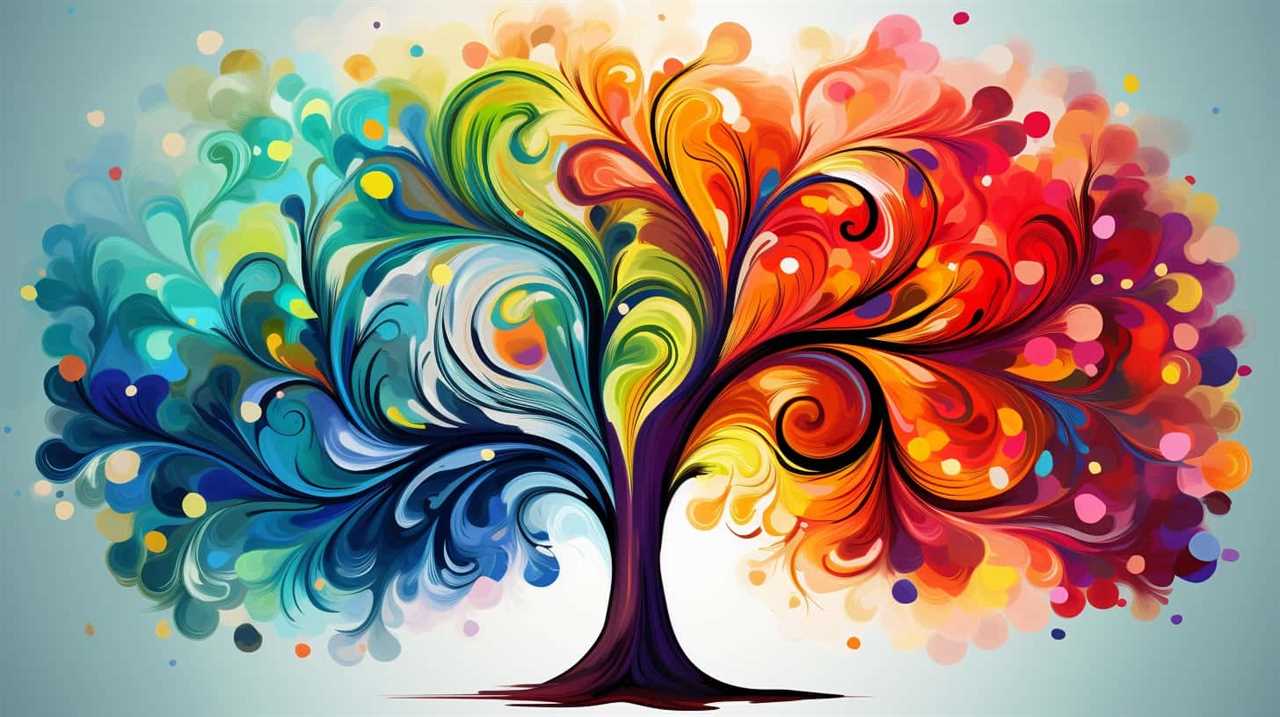
Through their creative expression, these artists have sparked conversations, shattered stereotypes, and paved the way for a more inclusive and equitable society.
Lauren’s talent in writing is matched by her passion for storytelling. Her love for books and deep understanding of culture and entertainment add a distinct flavor to her work. As our media and press contact, Lauren skillfully bridges the gap between afterQuotes and the broader media landscape, bringing our message to a wider audience.
-

 Funerals Quotations3 months ago
Funerals Quotations3 months agoSoothing Hope Quotes for Funeral Reflections
-

 TV Shows Quotations2 months ago
TV Shows Quotations2 months agoTop 4 Unforgettable TV Drama Monologues
-

 Movies Quotations4 weeks ago
Movies Quotations4 weeks agoUnforgettable Cult Movie Quotes: A Compiled List
-

 Education and Knowledge1 week ago
Education and Knowledge1 week agoUnlock Success with the Best Study Motivation Quotes
-

 Travel and Exploration Quotations3 weeks ago
Travel and Exploration Quotations3 weeks agoWisdom on Waves: Notable Maritime Explorer Quotations
-

 Education and Knowledge1 week ago
Education and Knowledge1 week agoBest Study Quotes: Unlock Student Potential!
-

 Military Quotations2 months ago
Military Quotations2 months agoInspiring Military Quotations for Strength & Honor
-

 Travel and Exploration Quotations3 weeks ago
Travel and Exploration Quotations3 weeks agoWhy Travel Teaches Unforgettable Life Wisdom?

















